14 Best Filipino Festivals: a mere sample of the exquisite places to visit in the Philippines
Filipino Festivals: Get your travel head back on and get to the Philippines and explore. Well, they do say, “It’s more fun in the Philippines”. I have the great fortune to be married to a Filipina and have a house on the beautiful island of Panglao, part of Bohol.
So, we explore a lot and of course, we eat a lot too. With Covid restrictions now majorly ‘calmed’ we thought it a good time to share our ideas on fun things to do in the Philippines around the 14 exciting Filipino festivals in 2023 and to give you insights into the most favourite Filipino Food at those events.
In the Philippines, the thrilling local Festival celebrations begin in January. After years of only being able to celebrate virtually because of the Covid-19 lockdowns, the country is eager to finally have some traditional celebrations in 2023.
Here it comes, our stunning blog of 14 Best Filipino Festivals and fun things to do in the Philippines including Pangasinan, Baguio, Batangas, Quezon City, Sinulog Festival, Pampanga, Palawan, San Juan, Davao City, Panagbenga Festival and Baguio City.
Festivals in the Philippines are celebrated with a lot of colourful fanfare and pageantry as well as a lot of joie de vivre regardless of the reason that they are hosted.
Filipinos would throw a huge party to honour just about anything: a patron saint, an important historical event, or a regional specialty. I know this for a fact, I have been to many a Filipino ‘random party’.
In fact, at Fiesta time in the Philippines they have power outages, affectionately coined ‘brown-outs’ due to the power surges of multiple parties, additional lighting, and even personal Karaoke boxes.
Historically, town fiestas honouring a patron saint or renowned image provide the inspiration for many modern celebrations. These festivals played a significant role in the propagation of Roman Catholicism throughout the country when Spain held sway.
Map of the Philippines
But cultural festivals are another type of celebration that has recently gained mass popularity. These festivals are sometimes created by local governments in an effort to attract tourists and showcase local Filipino food, Filipino dishes, arts, and attractions.
I’ll be sharing a Filipino food list for you below, with some of the top Filipino dishes, to accompany 14 Best Filipino Festivals, and even some of my Filipino food personal recipes as well.
Hey, at least you’ll know what to ask for to eat as you party on.
Whatever the occasion may be, festivals in the Philippines are always celebrated with great gusto. Here’s a breakdown of some of the best parties to hit up in the year of vengeance vacations, 2023.
Don’t just stick to this list of 14 Best Filipino Festivals, though; be ready to join in the fun whenever you visit a new city, town, province, or barangay.
With 104 million people spread out over 7,641 islands, there’s bound to be a huge party going on somewhere at any given time. It really is MORE fun in the Philippines.
Here it comes, our stunning blog of 14 exciting Filipino Festivals and fun things to do in the Philippines including Pangasinan, Baguio, Batangas, Quezon City, Sinulog Festival, Pampanga, Palawan, San Juan, Davao City, Panagbenga Festival and Baguio City.
14 Best Filipino Festivals - in approx date order of happening
14 Best Filipino festivals: Contents
Feast of Black Nazarene, #1 of Best Filipino Festivals
Quaipo Church Manila / January
Quiapo is known for its vibrant market, which offers a wide variety of goods and services, and the World famous Quiapo Church. The district is also home to several historical landmarks, including the Quiapo Church and the Mosque of Quiapo.
The Feast of Black Nazarene is an intense, day-long festival highlighted by a mammoth procession of the image of the Black Nazarene from Quiapo Grandstand, Rizal Park, Manila, and around Quiapo district participated in by mostly male devotees who walk barefoot carrying the image on their shoulders.
Full of faith, beliefs, and hopes that wishes will be granted and sins are forgiven, believers on this occasion express their deepest gratitude to the Creator for all the bounties received the whole year through.
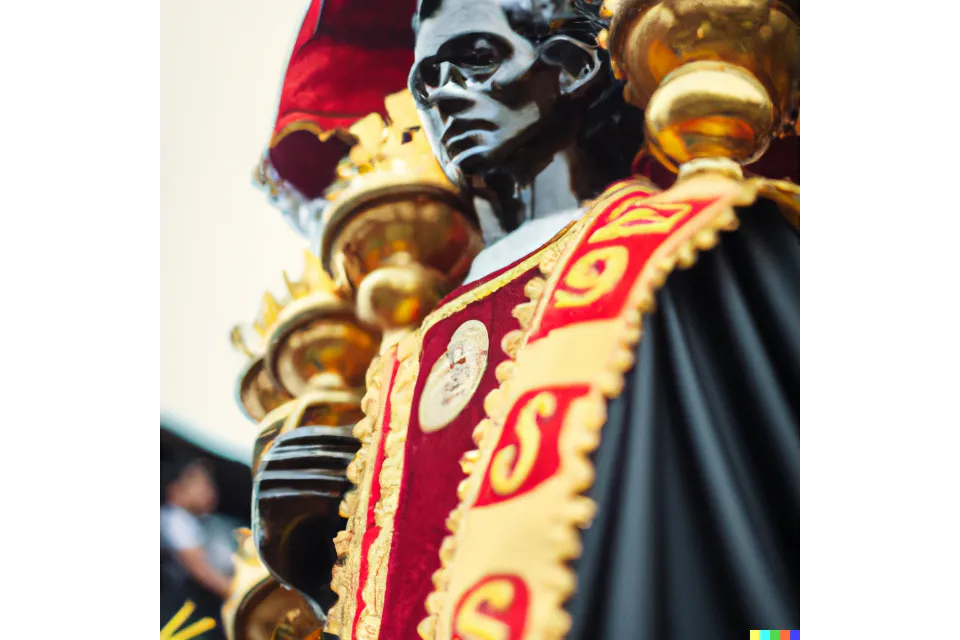
The Feast of the Black Nazarene is a religious festival held in honour of the Black Nazarene, a life-sized statue of Jesus Christ carrying the cross, which is believed by many Catholics in the Philippines to have miraculous powers. The statue is believed to have been brought to the Philippines by Spanish missionaries in the early 17th century, and it is now housed in the Quiapo Church in Manila.
Every year, on January 9th, a large procession known as the “traslacion” is held in which the statue is carried through the streets of Manila near to the Quiapo Church. The festival is one of the largest religious events in the Philippines, with millions of people participating.
What is Quiapo Church?
The Quiapo Church is a well-known Roman Catholic church that can also be referred to as the Minor Basilica of the Black Nazarene. It can be found in the middle of Manila, in the Philippines. Devout Catholics travel from all over the country to visit this ancient church because it is considered a holy spot. They come to pay their respects to the Black Nazarene, which is a figure of Jesus Christ in life-size carrying the cross and is thought to be magical. Hence the festival starts at the Quiapo Church.
Due to the fact that Quiapo Church was founded in 1586, the church is considered to be one of the oldest churches in the Philippines. Over the course of several centuries, Quiapo Church has been subjected to a number of different reconstructions and restorations, the most recent of which took place in the 1990s.
The front of the church is adorned with neoclassical architecture and stained-glass windows, which make it a stunning sight to see. The interior of Quiapo church is as remarkable, featuring elaborate carvings and paintings that adorn the walls and ceilings.
The annual procession of the Black Nazarene, which takes place on January 9th, is one of the most well-known events that is connected to the Quiapo Church and takes place every year. During this procession, hundreds of thousands of devotees come to take part in the parade, which entails carrying the statue of the Black Nazarene through the streets of Manila.
During this procession, the Black Nazarene is carried through the streets of Manila. The procession is a loud and colorful affair, with participants dressed in maroon and yellow. They sing hymns and prayers as they make their way through the neighborhood.
The Quiapo Church is not just notable due to its religious significance, but also due to its significance as a cultural and historical landmark. The church has been present during a good number of significant events that have played a significant role in the development of Philippine history, and it continues to be an essential symbol of the Catholic legacy of the country.
In conclusion, the Quiapo Church is a must-visit place for individuals interested in Philippine history and culture, as well as for those seeking a spiritual experience. Visit this one-of-a-kind and intriguing location to take in its stunning architecture, deep historical significance, and important religious role. Quiapo Church is a MUST VISIT when in Manila.
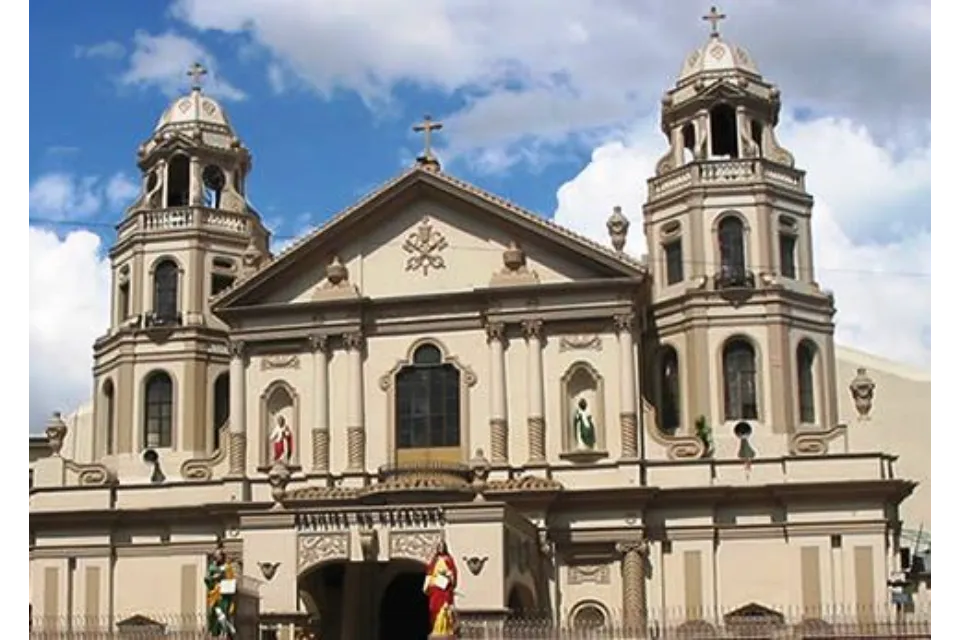
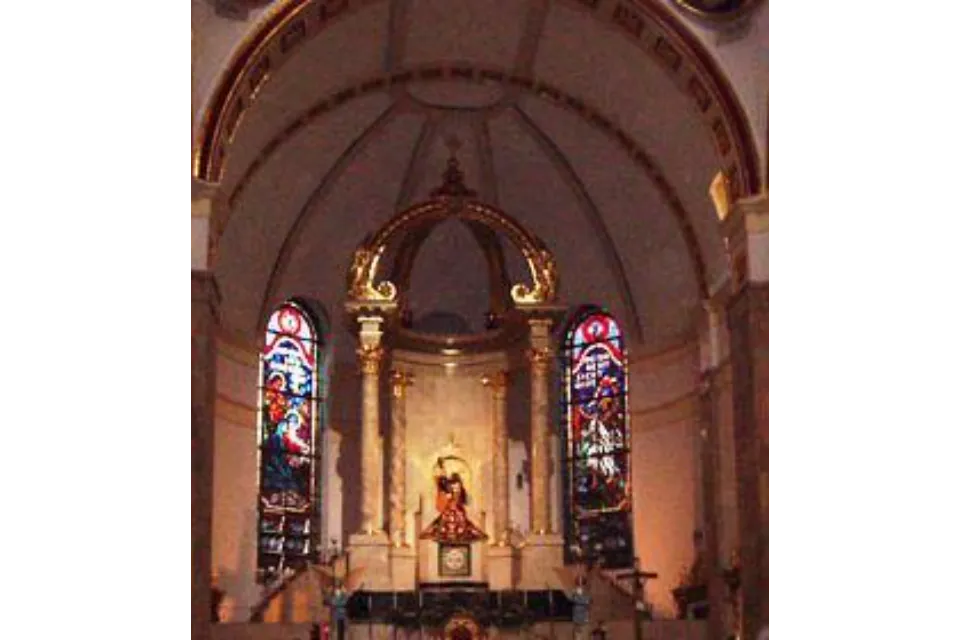
How to get to Quiapo, Quiapo Church, and The Feast of Black Nazarene?
Quiapo is a district located in the city of Manila in the Philippines. To get there, you can take a bus, taxi, or other transportation to Quiapo. The district is easily accessible from many parts of the city and is a popular destination for tourists and locals alike.
- Where to find more information about The Feast of Black Nazarene?
- Find more information about Quiapo Church?
When is The Feast of Black Nazarene?
The feast typically takes place on January 9, so you should plan your trip accordingly. Keep in mind that the exact date of the feast may vary from year to year, so it’s a good idea to check with the local tourism office, above, for the most up-to-date information.
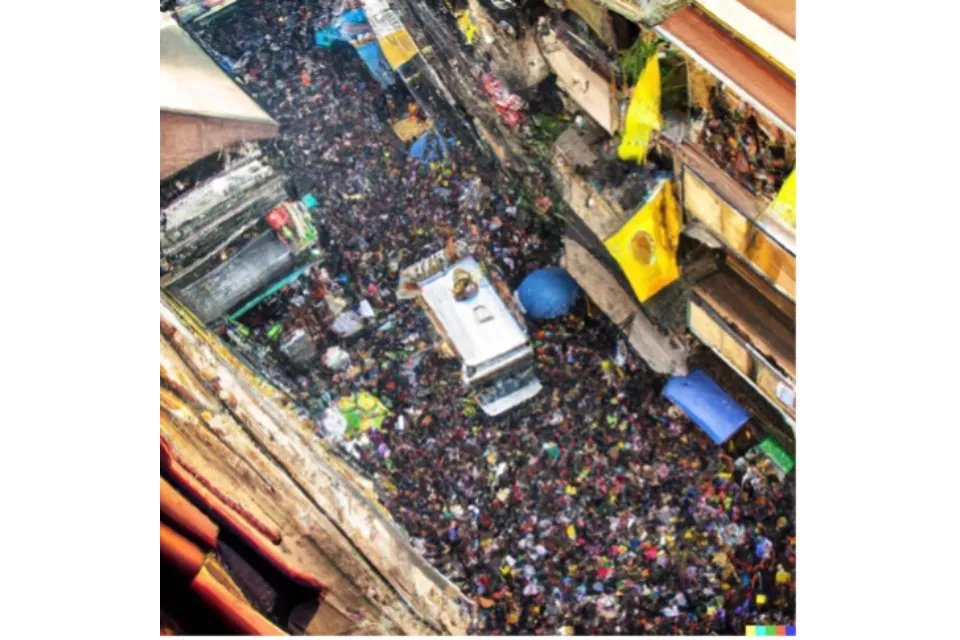
Dinagyang Festival, #2 of Best Filipino Festivals
Iloilo City / January
The Dinagyang Festival is a religious and cultural festival held annually in Iloilo City, Philippines. It is held on the fourth Sunday of January and is a celebration of the arrival of the Malay settlers on the island of Panay and the subsequent conversion of the native population to the Roman Catholic faith. The festival features vibrant street parades and performances by local dance groups, who compete for prizes and recognition. The festival is named after the Ilonggo word “Dinagyang,” which means “to revel in merrymaking.”
The Dinagyang Festival is recognized as one of the most important and prestigious celebrations in the Philippines. The history of devotion to the Holy Child Jesus, more commonly referred to by devotees in the Philippines as Sr. Sto. Nino is detailed in this work. The festival also celebrates the entrance of Malay settlers and the legendary purchase of Panay Island by the Ati Indians. Both of these events are commemorated during the event.
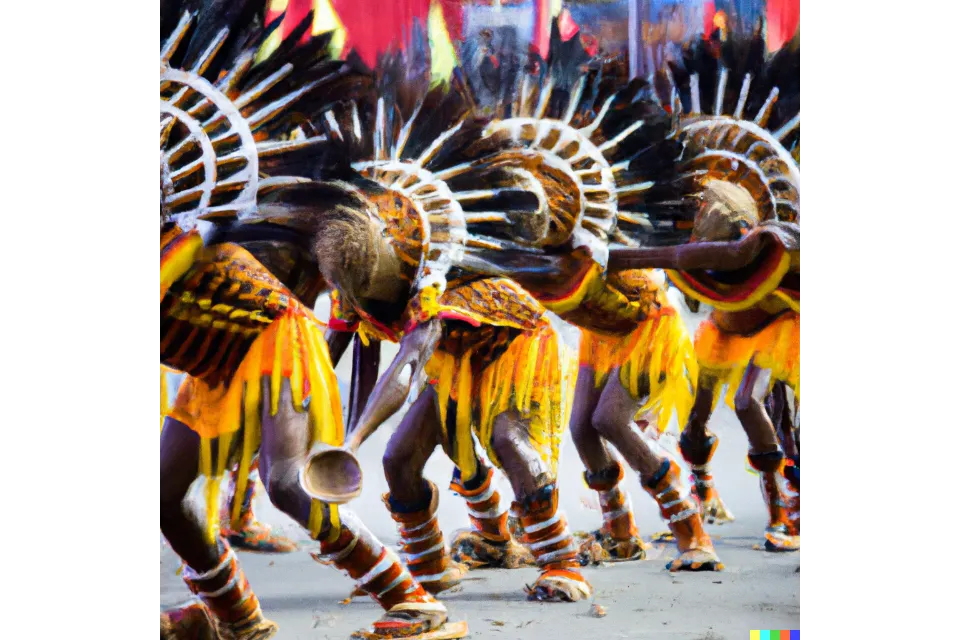
Dinagyang season in Iloilo City takes place during the first month of the year and is highlighted by an Ati Tribe Competition held on the fourth Sunday of every January. Midway through the month of October of the year before, there is an official launch that serves as a signal for the beginning of preparations, particularly for the purposes of getting tribes ready to perform in January of the following year.
The participants demonstrate impressive choreography while wearing colourful tribal costumes and striking props to present socio-cultural and religious tableaus depicting life in Panay before the Spanish colonization and the advent of Catholicism in the country. The tableaus are meant to represent life in Panay before the arrival of Catholicism in the country.
Iloilo City will play host to the Dinagyang Festival once more in 2023, marking the first time the event has been held there since the pandemic lockdowns. The Hiligaynon word “dagyang,” which means “to celebrate,” is where the phrase “Hala bira!” comes from.
In commemoration of Santo Nio, rowdy celebrations referred to as “Dagyang sa Calle Real” start on Saturday night after Holy Mass and continue until early Sunday morning. The Ati Tribe Competition consists of tribal warriors that dance to the throbbing beat of drums and improvised percussion instruments. They are covered in soot and clad in clothing that is reminiscent of the indigenous peoples of Panay Island.
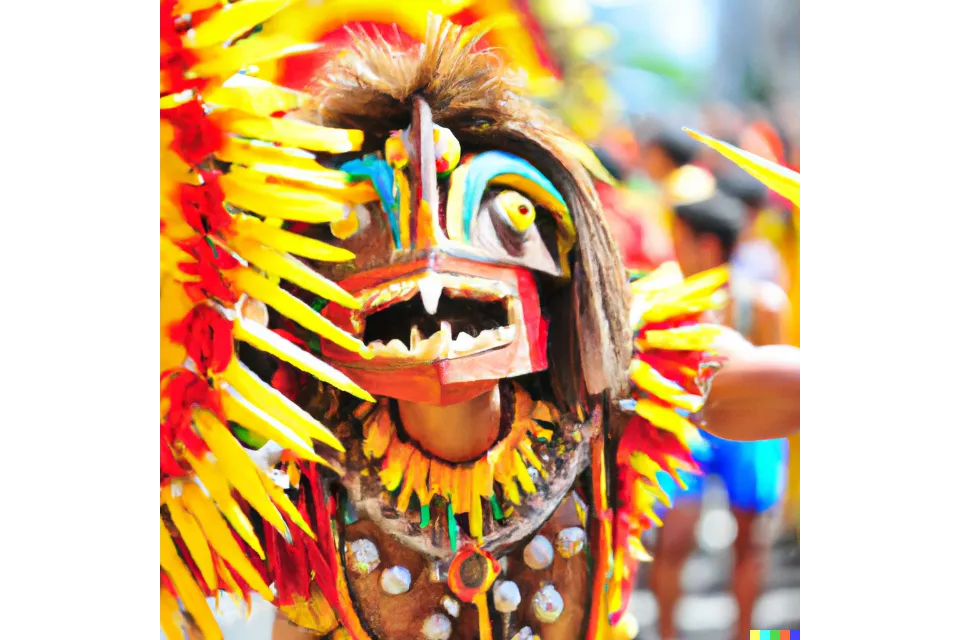
Their native clothing is a homage to the Legend of the 10 Bornean Datus, which recalls the account of how indigenous Ati people bartered land with ten Malay chieftains in exchange for a gold salakot. The legend describes how the gold salakot was used to buy land (traditional cone-shaped hat). When the fourth weekend of January arrives, celebrations spill out into the streets of the central business district of Iloilo.
Where can you find more information about The Dinagyang Festival?
When is The Dinagyang Festival?
The Dinagyang Festival is an annual event held in Iloilo City in the Philippines. The festival typically takes place in late January, so you should plan your trip accordingly. Keep in mind that the exact date of the festival may vary from year to year, so it’s a good idea to check with the local tourism office for the most up-to-date information.
How to get to The Dinagyang Festival?
To get there, you can fly to Iloilo City and then take a taxi or other transportation to the festival grounds. To fly to Iloilo City, you will need to first fly to Manila, which is the capital city of the Philippines. From Manila, you can take a domestic flight to Iloilo City. There are several airlines that offer flights from Manila to Iloilo City, including Philippine Airlines and Cebu Pacific.
Sinulog Festival, #3 of Best Filipino Festivals
Cebu / January
The celebration of colourful religious festivals in the Philippines can begin as early as the first month of the year, with the Sinulog Festival in Cebu City being the most important of these events.
Sinulog Festival is a festival that was first held in 1980 to honour the Santo Nio de Cebu, a revered figure of the Child Jesus that was given to the local chieftain Rajah Humabon and his wife Hara Humamay by the Portuguese adventurer Ferdinand Magellan during their Christian baptism in 1521.
The Sinulog Festival is the greatest and most well-known celebration that Cebu has to offer. This celebration is held in remembrance of the Holy Child, also known as the Sto. Nio de Cebu.
People gather along the route of a grand solemn procession and partake in the revelry amidst a mardi gras-style parade immersed in wild colours and the constant beating of drums of the ‘Pit Senyor’ on the third Sunday of every January. This celebration is known as Fiesta Seor and is widely celebrated.
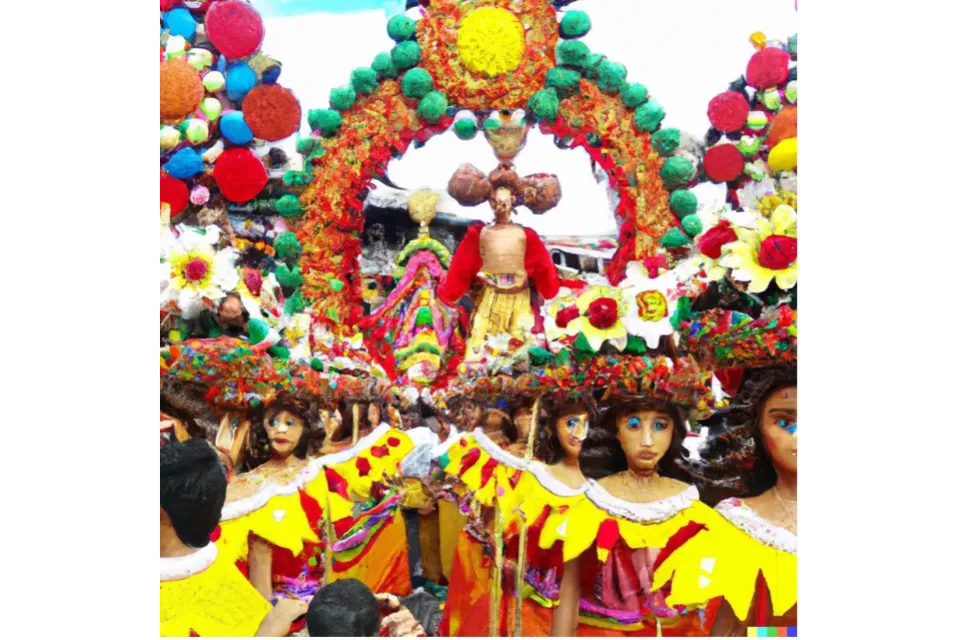
The word “sulog,” which means “water current” in Cebuano, is whence the celebration gets its name. The festival is symbolized by the forward-and-backward movements of the traditional Sinulog dance, during which revelers shout “Pit Senyor.”
Sinulog Festival has evolved into one of the most impressive festivals in the country over the course of several decades, and it now regularly draws a crowd of up to 3.5 million people. There will be a solemn procession through the city streets, a fluvial parade along Mactan Channel, and costumed contingents from all around Visayas and Mindanao will be dancing in the streets all day long.
Marching bands, extravagant floats, and enormous effigies known as higantes accompany the colourful dancers throughout the festival.
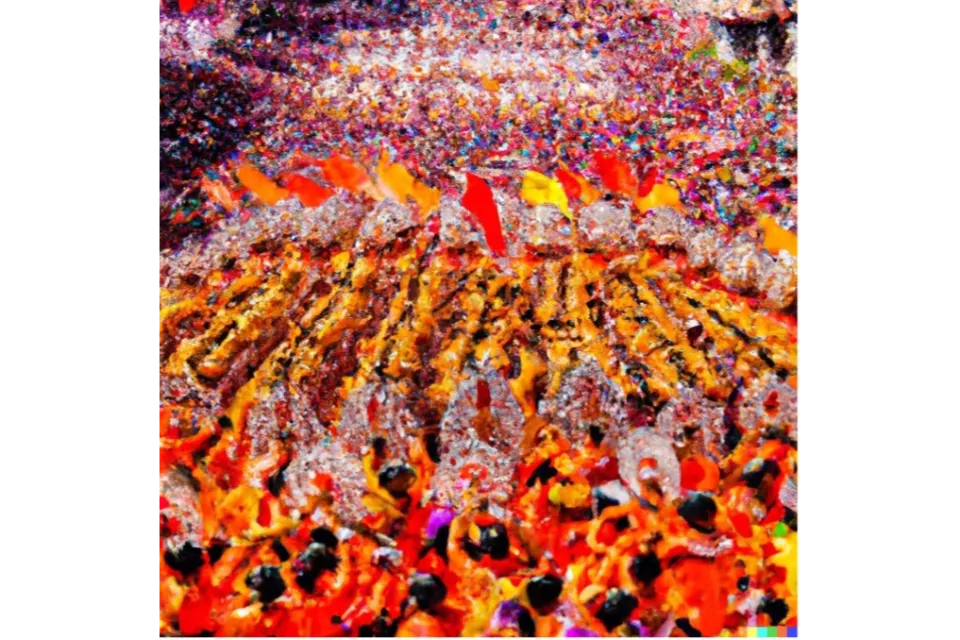
We are all looking forward to Sinulog’s major return in 2023, even though it has been held in some form or another practically every year hence.
When is the Sinulog Festival:
It will take place on January 15th in 2023, while festivities leading up to the festival will begin several days before. The municipal government intends to hold the grand parade at the South Road Properties, which is a reclaimed land area that is 300 acres in size.
Where can you find more information about Sinulog Festival?
How to get to the Sinulog Festival:
The Sinulog Festival is an annual event held in Cebu City in the Philippines. To get there, you can fly to Cebu City and then take a taxi or other transportation to the festival grounds. Keep in mind that the exact date of the festival may vary from year to year, so it’s a good idea to check with the local tourism office for the most up-to-date information.
Rodeo Masbateño Festival, #4 of Best Filipino Festivals
Masbate / April
For the Rodeo Masbateño Festival which lasts for five days, put on your best cowboy hat and make your way to Masbate City, known as the Rodeo Capital of the Philippines.
At the Rodeo Masbateño Festival, cowboys, and cowgirls from all over the country, decked out in full costume in the style of the American West, compete in a number of categories that honour the local cattle and ranching business.
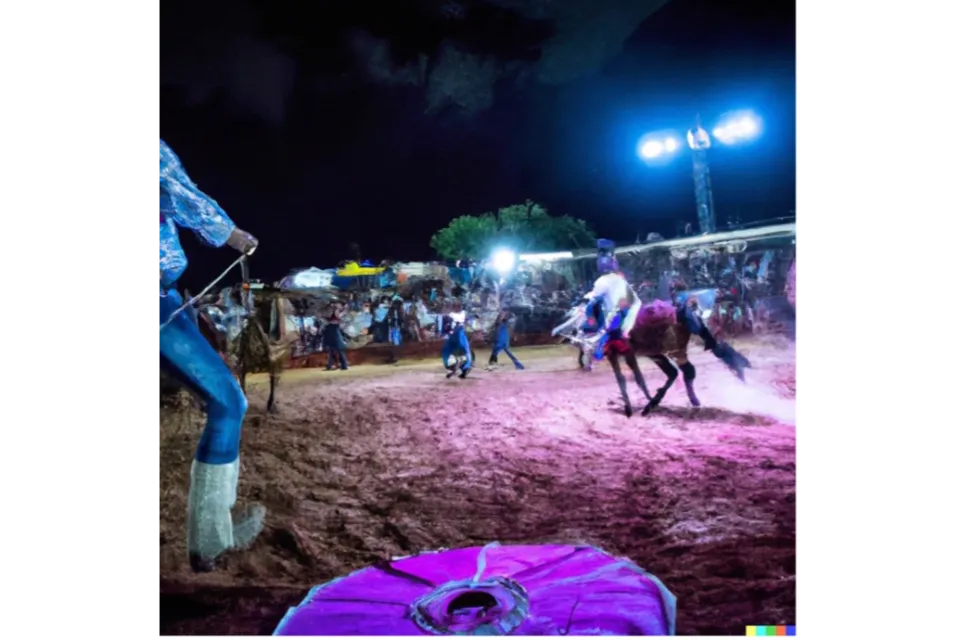
The event has been going strong since it was first staged in 1993.
The Rodeo Masbateño Festival festivities begin with a parade of horseback riders and then continue with cattle shows, street barn dancing competitions, and beef culinary events.
The cattle drive through the city streets, which is a re-enactment of how Masbate’s ranchers carried herds of cattle to the harbour, is an event that visitors just cannot miss.
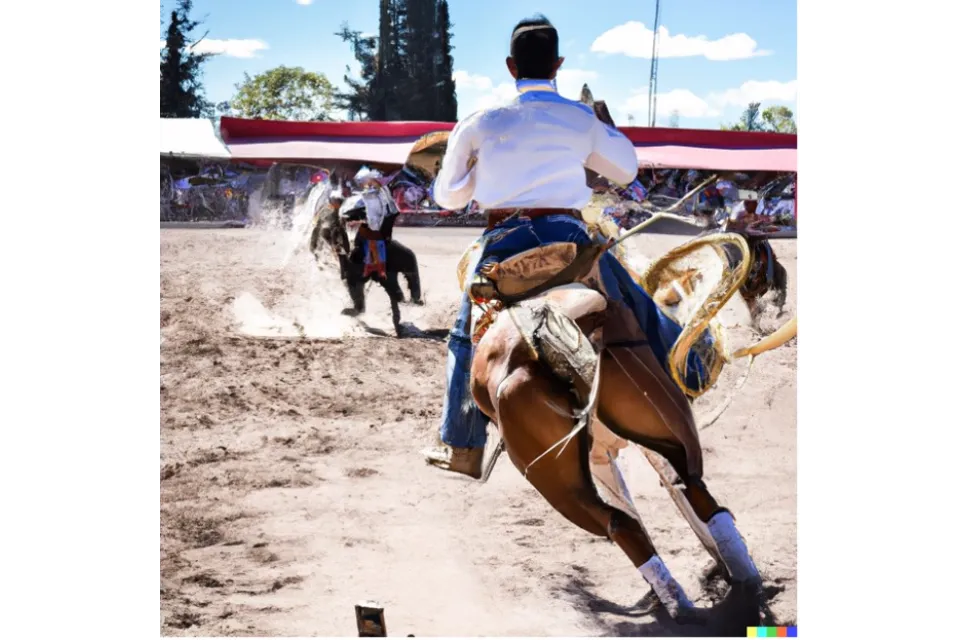
When is the Rodeo Masbateño Festival:
In the middle of the month of April, immediately following Holy Week. Keep in mind that the exact date of the festival may vary from year to year, so it’s a good idea to check with the local tourism office for the most up-to-date information.
Where is the Rodeo Masbateño Festival:
The Rodeo National Finals are held at the open-air arena in the city, which is the only permanent structure in the country that was created just for rodeo.
How to get to Rodeo Masbateño Festival?
The Rodeo Masbateño Festival is an annual event held in the city of Masbate in the Philippines. To fly to Masbate, you will need to first fly to Manila, which is the capital city of the Philippines. From Manila, you can take a domestic flight to Masbate City.
There are several airlines that offer flights from Manila to Masbate City, including Philippine Airlines and Cebu Pacific. You can check their websites for the latest information on flight schedules and prices. and then take a taxi or other transportation to the festival grounds.
Where to find out more information about Rodeo Masbateño Festival?
Moriones Lenten Rites, #5 of Best Filipino Festivals
Marinduque / April
Marinduque, a bucolic island that comes to life with one-of-a-kind rituals and religious activities, is one of the most fascinating sites in the country to see Moriones Lenten Rites traditions. It is also one of the most fascinating places in the world.
Passion plays, also known as senakulo, are performed throughout the week in the town centers of Senakulo. These Moriones Lenten Rites plays re-enact significant events from the Bible. The most impressive productions on the island are put on in Boac, which is also the name of the provincial capital.
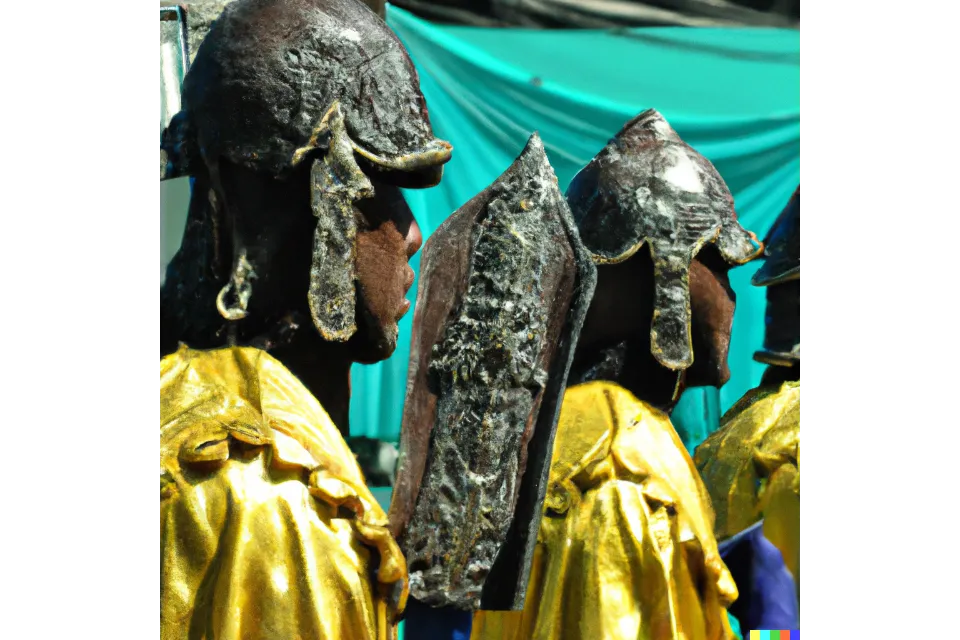
On Good Friday, male flagellants known as antipos whip themselves as a kind of ritual atonement. This is the day when religious zeal reaches its height.
Via Crucis, also known as the Way of the Cross, is a dramatic re-enactment of the final hours of Jesus’ life that is performed throughout the streets of Boac and is accompanied by the moriones, who are masked penitents portraying the Roman centurions guarding the crucifixion. The performance begins around the middle of the morning.
The afternoon is when the processions take place. Hooded male devotees toting bamboo clappers and leading the procession in the town of Gasan are followed by a group of female devotees dressed in all black and wearing headdresses made of leaves. Both groups are barefoot.
You may also observe here how Filipino Catholicism infuses indigenous ways of thinking and doing things, such as when village healers create tawak, a bitter herbal concoction that is thought to protect drinkers from venomous bites and that can only be made on Good Friday, the most solemn day of the Catholic calendar. Tawak is a bitter herbal concoction that is supposed to protect drinkers from venomous bites.
On Easter, Sunday Moriones Lenten Rites has penitents known as moryong bulaklakan parade through the streets of Mogpog, the town where the tradition first appeared in the 1880s. The moryong bulaklakan wear masks that are adorned with flowers. The highlight of the parade is a recreation of the search for Saint Longines, who was executed and later martyred. A significant figure in the Moriones rituals, he was a Roman centurion who became a Christian after the blood of Jesus Christ cured the blindness that had plagued him since childhood.
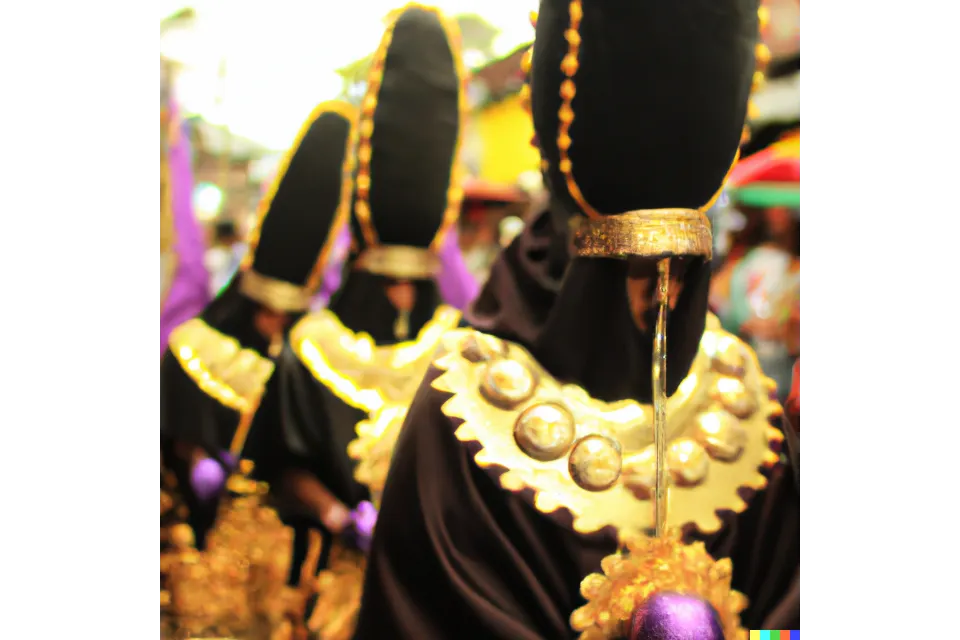
When are the Moriones Lenten Rites:
from 2nd to 9th of April. The festival typically takes place during Holy Week, which falls in March or April, so you should plan your trip accordingly. Keep in mind that the exact date of the festival may vary from year to year. It’s a good idea to check with the local tourism office for the most up-to-date information.
Where are the Moriones Lenten Rites:
The towns of Mogpog, Boac, and Gasan are the locations where the most fascinating Moriones Lenten Rites events take place.
Where to find more information about Moriones Lenten Rites?
https://www.facebook.com/MorionesFestival/
How to get to Moriones Lenten Rites?
The Moriones Lenten Rites is an annual event held on the island of Marinduque in the Philippines. To get there, you can fly to Marinduque and then take a taxi or other transportation to the festival grounds. To fly to Marinduque, you will need to first fly to Manila, which is the capital city of the Philippines. From Manila, you can take a domestic flight to Marinduque. There are several airlines that offer flights from Manila to Marinduque, including Philippine Airlines and Cebu Pacific. You can check their websites for the latest information on flight schedules and prices.
Viva Vigan Binatbatan Festival of the Arts, #6 of Best Filipino Festivals
Ilocos Sur / May
During the first week of the month of May, the Viva Vigan Binatbatan Festival of the Arts is held for attendees to enjoy. The Save Vigan Ancestral Homes Association, Inc. (SVAHAI) launched it in 1993 with the intention of raising people’s awareness of the importance of the ancient town. By doing so, the organization intended to reinforce people’s resolve to preserve and protect this cultural site.
Over the course of the previous sixteen years, the Viva Vigan Binatbatan Festival of the Arts has been extremely effective in drawing attention to the ancestral houses located in Vigan.
The Viva Vigan Binatbatan Festival of the Arts has also been successful in promoting other parts of Vigan, with the assistance of national and municipal governments, as well as supporters from the media, arts, and non-governmental organizations (NGOs).
Its popularity has also benefitted the entire tourism business of the northern region, which has resulted in the arrival of tens of thousands of tourists from both domestic and international locations who are eager to explore the region and have a “northern experience.”
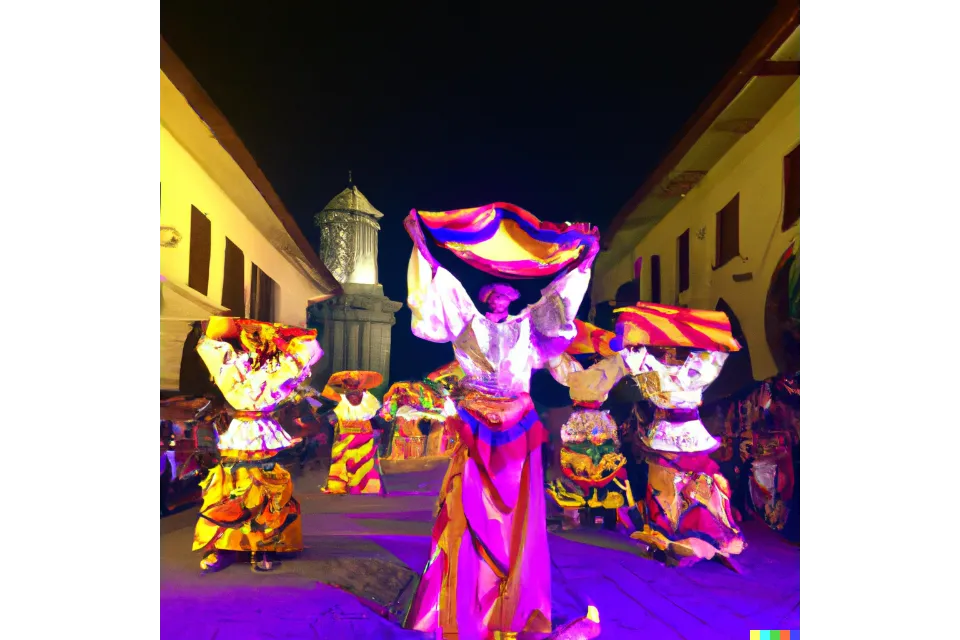
The week-long celebrations of Viva Vigan Binatbatan Festival of the Arts hold significance not just in a religious but also in a secular sense. Vigan recalls its own Isabelo de los Reyes, who established the first labour federation in the country, on May 1st, the same day that the rest of the country celebrates Labour Day. This is the beginning of the festival.
In addition, Saint Joseph, the patron saint of labourers, is remembered by devout Catholics on this day. The celebrations of the Viva Vigan Binatbatan Festival of the Arts, which include a street dancing competition, take place after the memorial that takes place on the first day. There is a connection between Vigan’s abel Iloco craft and the Binatbatan dancing. This dance demonstrates how bamboo sticks are used to beat cotton pods in order to free the cotton fluff known as batbat from the seed of the cotton plant. This event was established in 2002 with the purpose of showcasing a traditional form of weaving that is believed to have been practiced prior to the advent of the Spaniards.
At the Simbaan a Basiit, a mass is held in celebration of the Feast of Apo Sto. Cristo Milagroso on the third of May each year. Due to the several occasions in which it was reported that the Apo had rescued the city, this religious feast is of the utmost significance in Vigan. The Karbo Festival is an additional prominent festival that is held in conjunction with the Viva Vigan festival and was first held in 2005. Its purpose is to recognize the important role that the citizens of Vigan have played in the development of the agricultural industry.
The name of the celebration comes from the words “carabao,” which refers to the domesticated water buffalo found in the Philippines, and “bokel,” which refers to seeds. On this day, youngsters display their artistic masterpieces that make use of seeds, and a parade of carabaos that have been brightly painted takes place.
Santa Cruzan parade, abel fashion show and house decoration singing contests and beauty pageants, and other exciting events like the Amazing Heritage Race are some of the other activities that guests are encouraged to fit into their six-day Viva Vigan experience. Visitors are also encouraged to watch the calesa parade, ramada or traditional games, comedia or stage drama, and Santa Cruzan parade. In addition to this, they might take part in religious rites or go to exhibitions, garden displays, or commerce and food fairs.
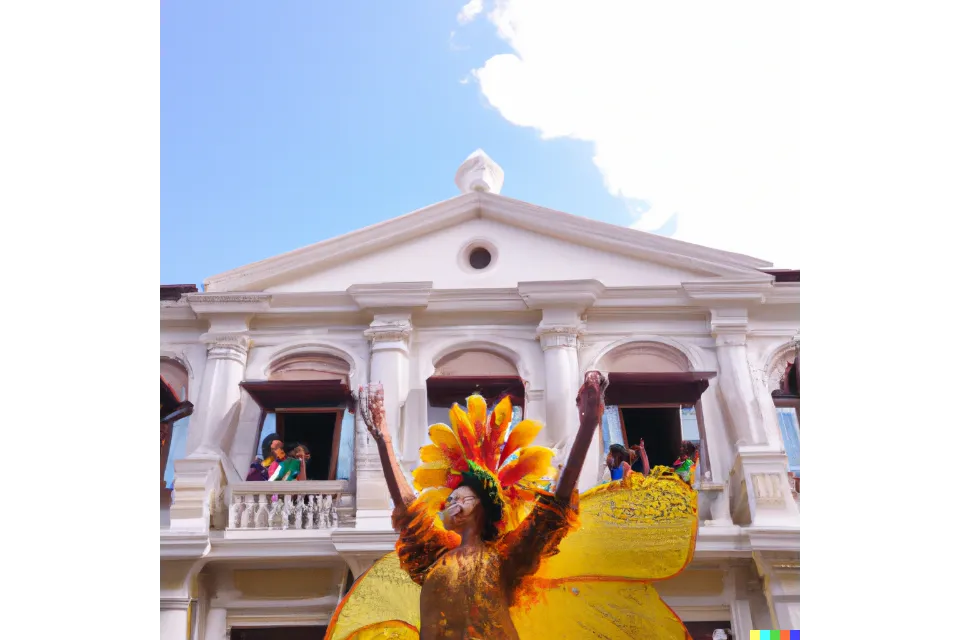
The picturesque city of Vigan in llocos Sur – Asia’s best-preserved model of a Spanish colonial town – puts its best foot forward from the last days of April to the first week of May with the VivaVigan Binathalan Festival of the Arts, a series of events that celebrates the religiosity and creative energy of the provincial capital. Started in 1993 by a group of heritage advocates, the event coincides with Thanksgiving Day, held on May 3, in honour of Santo Cristo Milagroso, a 17th-century image of a crucified Jesus Christ that is believed to be miraculous.
Several religious and cultural events are held throughout the Viva Vigan Binatbatan Festival of the Arts, including carabao painting, horse-drawn kalesa parade, and Santacruzan – a religious pageant practised nationwide that honours the finding of the Holy Cross by Saint Helena and her son, Constantine the Great.
When is Viva Vigan Binatbatan Festival of the Arts:
From the last days of April to the first week of May
Where is Viva Vigan Binatbatan Festival of the Arts:
The festival culminates with street dancing through the cobblestone street of Calle Crisologo, where centuries-old houses are decorated with the indigenous hand-loomed fabric called abel iloko.
How to get to Vigan?
To fly to Vigan, you will need to first fly to Manila, which is the capital city of the Philippines. From Manila, you can take a domestic flight to Laoag City, which is the closest airport to Vigan. There are several airlines that offer flights from Manila to Laoag City, including Philippine Airlines and Cebu Pacific. You can check their websites for the latest information on flight schedules and prices. Once you arrive in Laoag City, you can take a taxi or other transportation to Vigan. Alternatively, you can take a bus from Manila to Vigan, which will take about 12 hours.
Where to find more information about Viva Vigan Binatbatan Festival of the Arts?
Lubi Lubi Festival, #7 of Best Filipino Festivals
Glan / May
Sayaw Lubi-Lubi, also known as the coconut dance, is a traditional kind of celebration dance in the Philippines. It is performed in the form of a street parade and makes use of the abundance of coconut trees and other resources in the city. Every year during the month of May, the Gingoognons celebrate their patron saint, Sta. Rita de Cascia, with a festival that lasts the entire month and includes music, dancing, and eating.
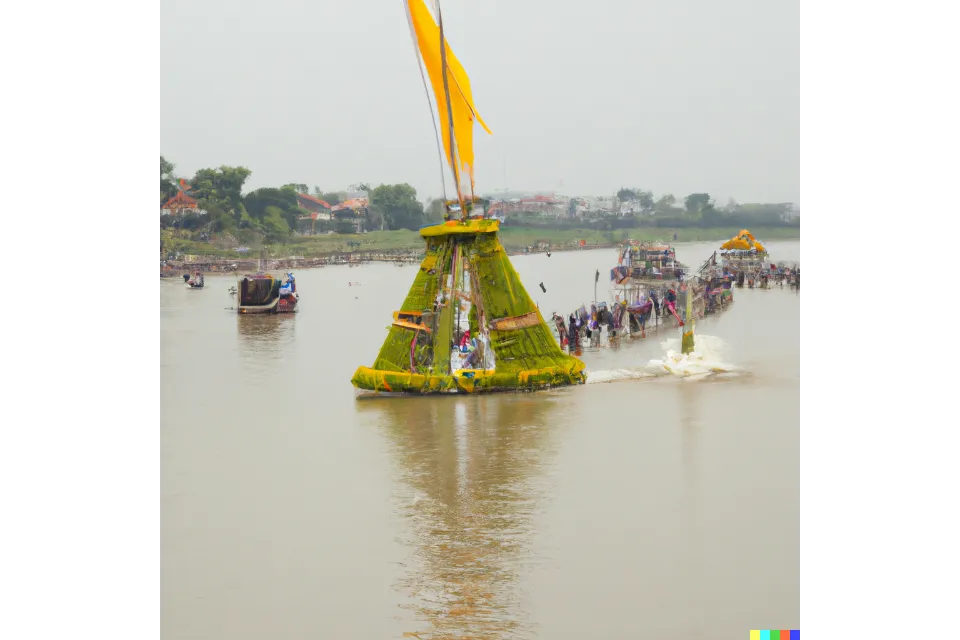
As a tribute to Sta. Catalina de Alexandria, the Lubi-Lubi sa Glan celebrates Sta. Catalina’s patron saint through a dance festival that highlights the versatility of the coconut. Clearly, the coconut has other uses besides making copra. Products made from coconuts, such as jewellery and home decor, as well as the “bahalina” coconut juice liquor, are shown during the event. The event’s main attraction is a street dancing competition featuring performers dressed in costumes made from coconut fibers.
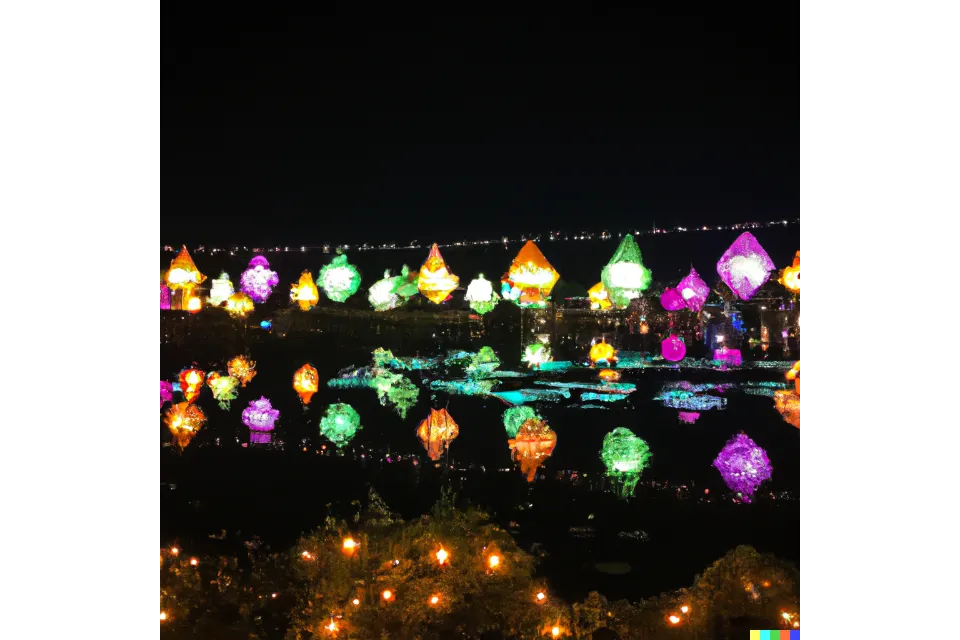
How to get to Lubi Lubi Festival?:
From Davao International Airport, take a taxi to Ecoland Bus Terminal. At the terminal, take a bus bound for General Santos City. Travel time would be around 3-4 hours. The fare is around Php250. Just tell the conductor to drop you off at Gaisano Mall and from there you can walk to KCC Mall wherein the vans bound for Gumasa can be found.
Where is the Lubi-Lubi Festival celebrated?
Lubi-Lubi Festival is celebrated in Glan, Sarangani. Glan is the oldest town in Soccskargen, and is also known as the “Coco Queen of the South” for being one of the top producers of coconut.
Carabao-Carroza Festival, #8 of Best Filipino Festivals
Iloilo / May
Pavia town in Iloilo province kept its farmland’s heritage alive as it celebrates the annual Carabao-Carroza Festival. This is even though new and rising agricultural technologies are always being developed. According to Gilbert Marin, an Iloilo tourism officer, the event has been going on since 1973 and is the longest-running festival in the province of Iloilo. It is done annually to commemorate the farmers and the water buffaloes that they depend on for their livelihood.
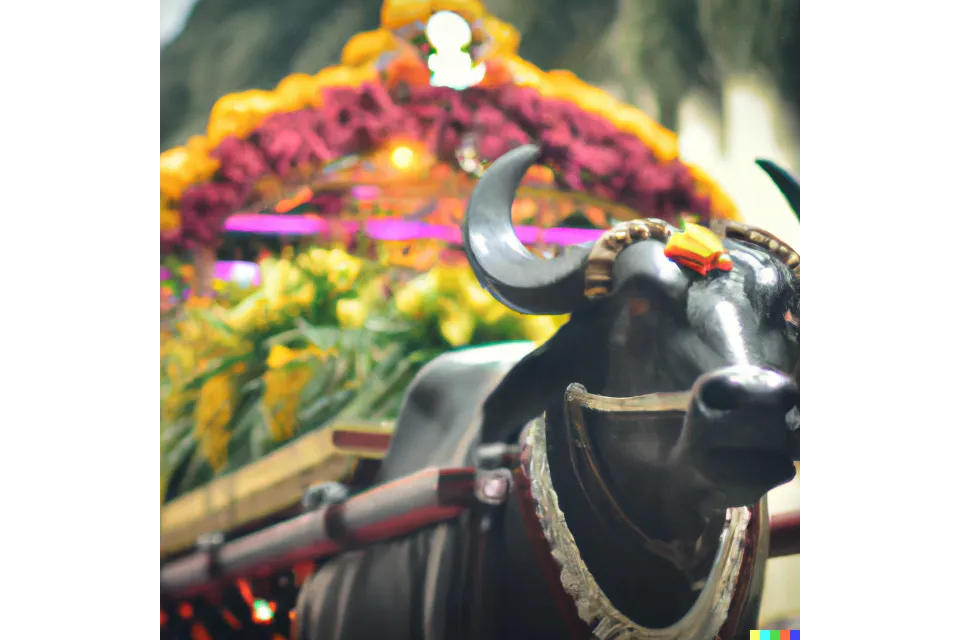
Even though there are now more advanced farming methods available, the Provincial Tourism Office has assured everyone that the festival will go on as planned. “Pavia will continue commemorating this festival to remind people that nothing beats the original,” he stated. “Pavia is committed to preserving its cultural heritage.”
The magnificent Carabao-Carroza procession, which starts at 6:30 in the morning, is the event that everyone looks forward to the most throughout the Carabao-Carroza Festival. The procession has 18 “beautified” carabaos and carrozas, which are bamboo carriages, each year. These participants display the distinctive handicrafts and products that are produced in Pavia’s villages.
The entries are representations of 18 Pavia villages — Aganan, Amparo, Anilao, Balabag, Purok I, Purok II, Purok III, Purok IV, Cabuagao Norte, Cabgao Sur, Jibao-an, Mali-ao, Pagsanga-an, Pandac, Tigum, Ungka I, Ungka II, and Pal-agon.
The carabaos also compete in a race on the 110-meter lane of the Pavia National High School where the parade culminates. The winner of the carabao race receives a monetary award of PHP10,000; the second runner-up received PHP7,000; the third runner-up received PHP5,000.
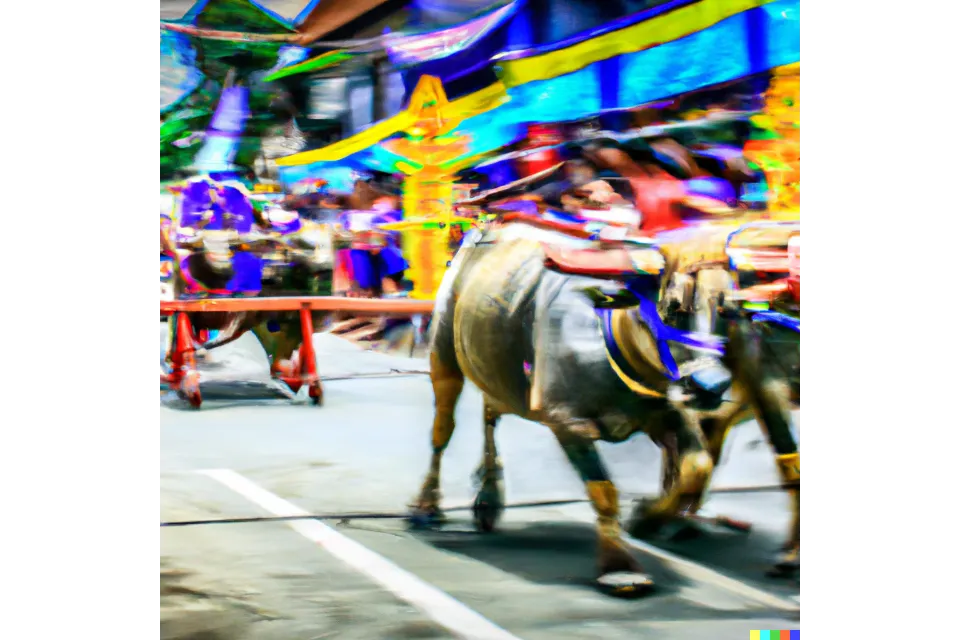
Pavia, a town north of Iloilo City, established the Carabao-Carroza Festival to honour their traditional farming practices, especially the use of carabaos to till the soil and transport goods.
The festivities kick off with a parade of 18 carts pulled by painted carabaos, each representing a barangay of the municipality. Each carroza is elaborately decorated with the village’s agricultural products.
Riding these decorated carts are pageant contestants from each town, who vie for the title of Carabao-Carroza Festival Queen later in the evening.
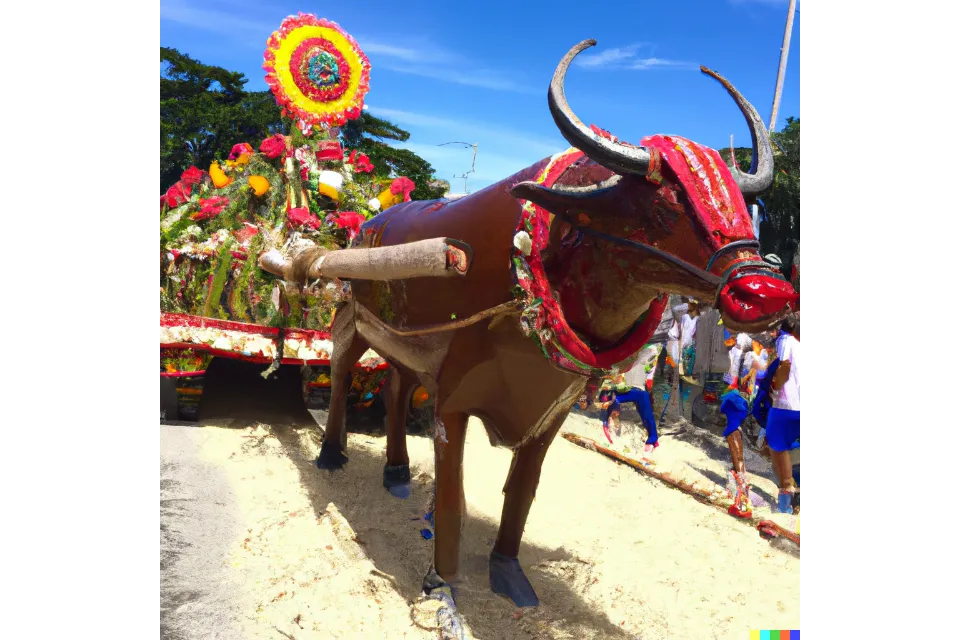
Where to find more information about Carabao-Carroza Festival?
When is the Carabao-Carroza Festival?
Founded in 1973, it is the oldest institutionalized festival in Iloilo province, held every May 3, the eve of the fiesta in honour of Saint Monica, the town’s patron saint.
Where is the Carabao-Carroza Festival:
The most exciting event is the carabao race, where burly bovines gallop with their farmer-owners across the track at Pavia National High School.
How to get to Iloilo?
To fly to Iloilo, you will need to first fly to Manila, which is the capital city of the Philippines. From Manila, you can take a domestic flight to Iloilo City. There are several airlines that offer flights from Manila to Iloilo City, including Philippine Airlines and Cebu Pacific. You can check their websites for the latest information on flight schedules and prices. Once you arrive in Iloilo City, you can take a taxi or other transportation to your destination on the island.
Pahiyas Festival, #9 of Best Filipino Festivals
Quezon / May
The 15th of May in the town of Lucban, Quezon, which is around 125 kilometers south of Manila, is like stepping into a fairy tale when Pahiyas Festival is in play. As a way of expressing gratitude to San Isidro Labrador, the patron saint of farmers is Pahiyas Festival where hiyas literally translates to “gem,” the townspeople decorate their homes along the path of the procession with elaborate arrangements of fruits, vegetables, hand-woven handicrafts and even Lucban Longganisa, the town’s specialty pork sausage that is all presented to the town’s patron saint during Pahiyas Festival.
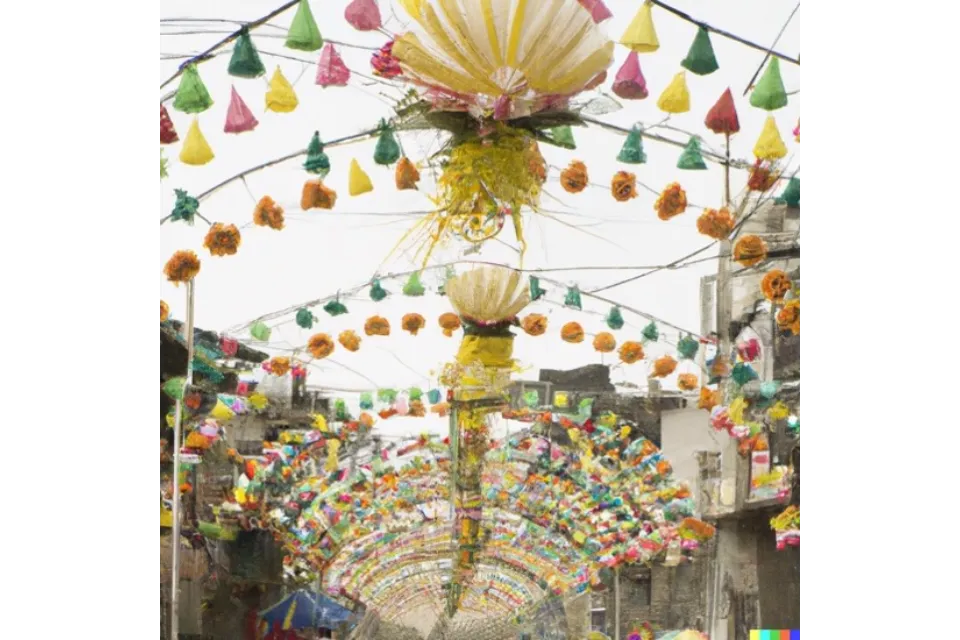
The colourful event, Pahiyas Festival, gets its name, from the Filipino term for the precious harvest that they collect and offer to the town’s patron saint, the ‘’gem” aka hiyas. Homes are covered in Kiping, a brightly coloured rice paper that they shape into leaves, flowers, and chandeliers they call Arangaya.
Candies are also made of Kiping, which have been fried or grilled and then dipped in sugar and can be dipped with vinegar or in a variety of different sauces at the Pahiyas Festival. Gets my vote.
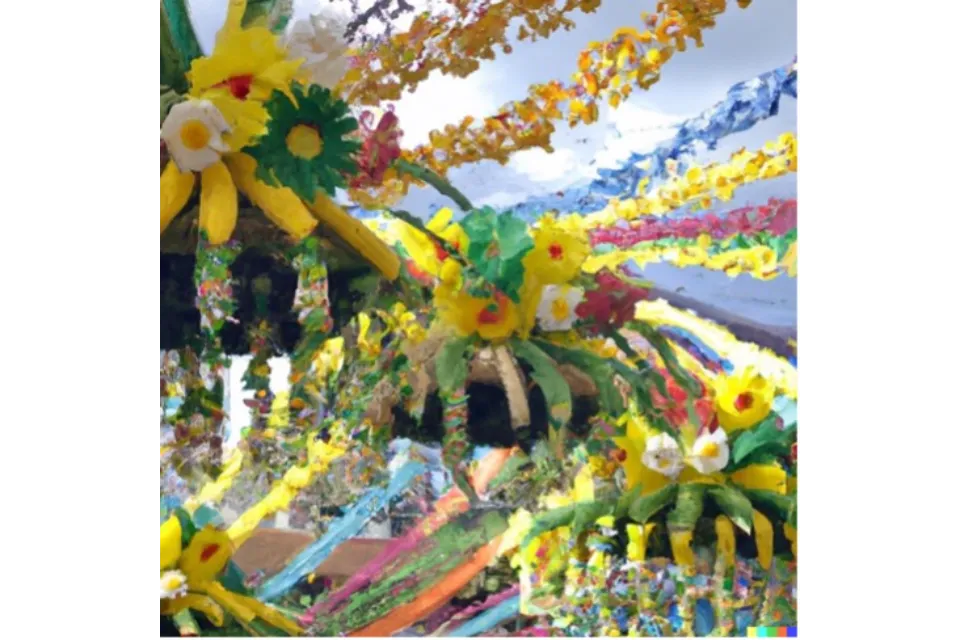
When is the Pahiyas Festival?
On May 15
How to get to Lucban?
Lucban is a town located in the province of Quezon in the Philippines. To get there, you can fly to Manila and then take a bus from Manila to Lucban. The bus ride from Manila to Lucban takes about 3-4 hours, depending on traffic and other factors. Alternatively, you can fly to Lucena City, which is the nearest airport to Lucban, and then take a taxi or other transportation to Lucban. Keep in mind that the exact route and mode of transportation will depend on your specific location and preferences.\
Where can you find more information about Pahiyas Festival?
Baragalan sa Palawan, #10 of Best Filipino Festivals
Palawan / June
Because of its abundant and varied flora and fauna, as well as its many natural features that have been carefully protected, the paradisiacal province of Palawan is frequently featured on a variety of worldwide “Best in The World” lists. Learn the reasons why sustainable ecotourism plays such an important role in the process of preserving the natural treasures of this paradise on earth.
It would be an understatement to say that Palawan is a beach bum’s dream destination. Sailing the length of the province, from the north to the southern tip of the main island, brings you up close and personal with paradise in its countless forms. From the coral-fringed dreamscapes of the Calamianes to the karst limestone formations of El Nido, to the wind-swept shorelines of central Palawan and the pristine sandbars of Balabac, sailing the length of the province allows you to experience paradise in all its myriad manifestations.
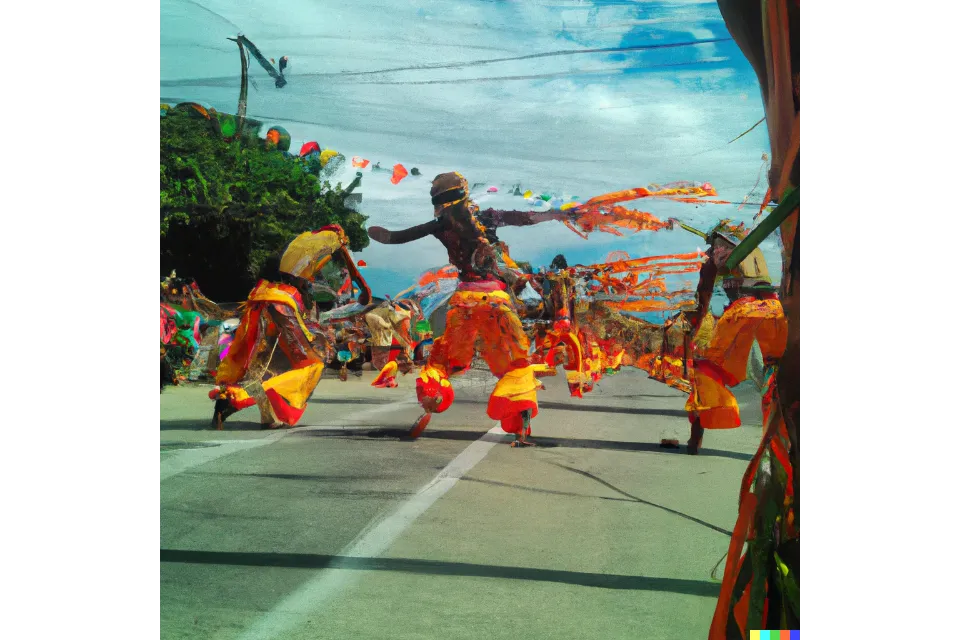
As summer winds down to give way to the first rains of the monsoon, Puerto Princesa City in Palawan hosts the last hurrah of the season, celebrating the province’s multifaceted culture and heritage at Baragalan sa Palawan.
Named after the Cuyonon word for “meet” or “gather” this annual celebration brings together the different cultures and stories from across the largest-sized province in the country.
Among the activities are a float parade, agricultural conventions, cock derbies, street parties and the Mutya ng Palawan beauty pageant. Different municipalities showcase their local delicacies, handicrafts, and tourist attractions.
The performers at Baragalan sa Palawan Festival are dressed in a variety of vibrant costumes, representing the traditional attire of lowland settlers and indigenous people, as well as endemic animals like the Palawan peacock-pheasant.
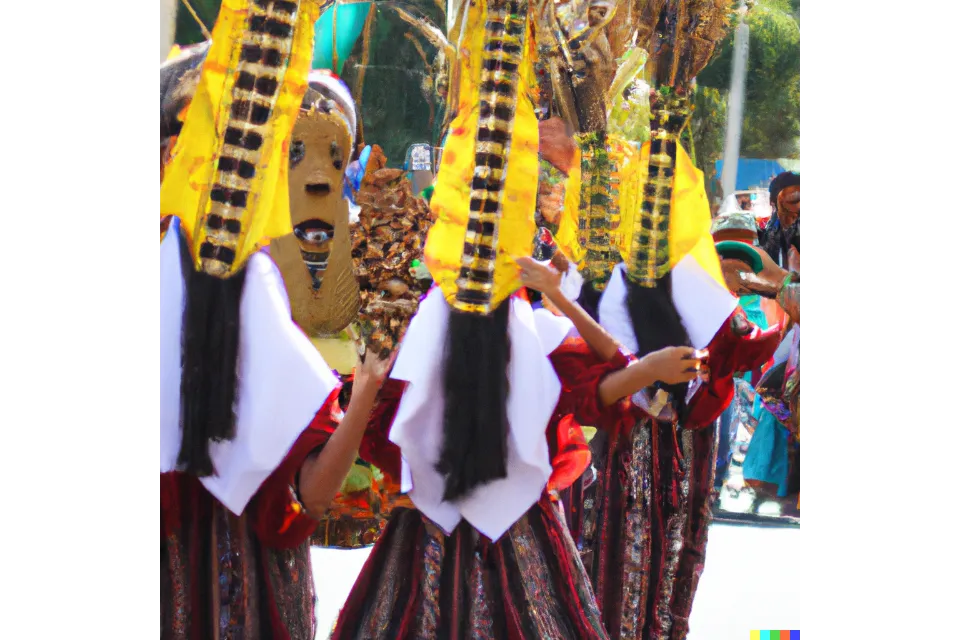
When is Baragalan sa Palawan Festival?
The two-week festival leads up to the foundation day of the province on June 23.
Where is Baragalan sa Palawan Festival?
The festivities reach their peak with the Saraotan sa Dalan, a street dancing competition held on the final day, where contingents from different municipalities parade from the Immaculate Conception Cathedral to the Palawan Provincial Capital.
How to get to Palawan?
Palawan is an island province located in the southwestern region of the Philippines. To get there, you can fly to Puerto Princesa, which is the capital city of Palawan. There are several airlines that offer flights from Manila, the capital city of the Philippines, to Puerto Princesa. You can check their websites for the latest information on flight schedules and prices. Once you arrive in Puerto Princesa, you can take a taxi or other transportation to your destination on the island.
Where can you find more information about Baragalan sa Palawan Festival?
Taong Putik Festival, #11 of Best Filipino Festivals
Nueva Ecija / June
The Taong Putik Festival is a Philippine religious festival that takes place in the city of San Juan in the Philippines. The Taong Putik Festival is held every year on the feast day of Saint John the Baptist, and it is known for its unique tradition of covering participants in mud, which is believed to have spiritual and medicinal properties. The festival is also a celebration of the town’s history and culture, and it is a popular tourist attraction.
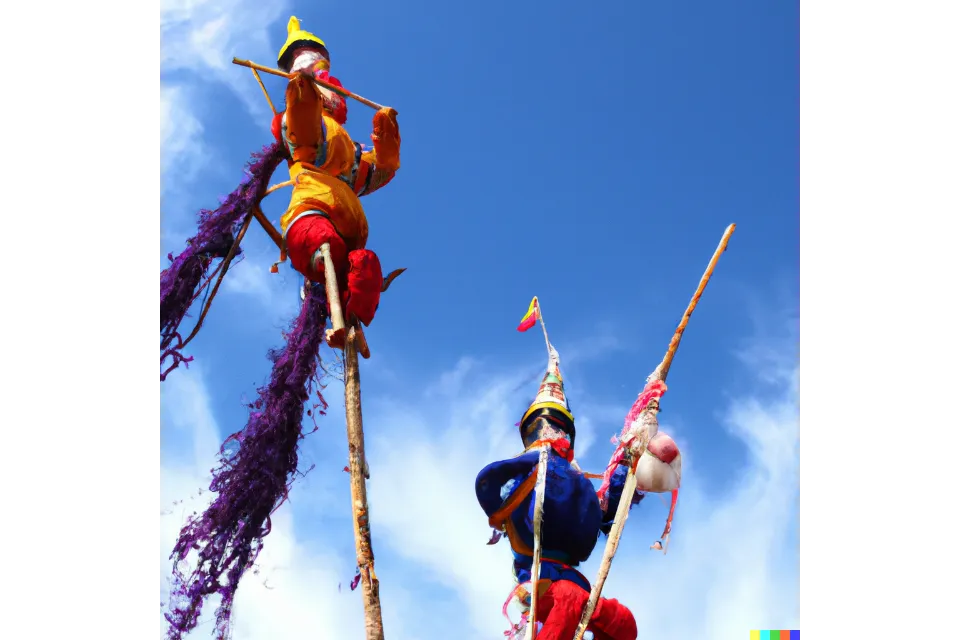
Saint John the Baptist Day AKA Taong Putik Festival, celebrated annually on June 24, is honoured in a variety of ways across the many communities who revere him. While the celebrations in Manila and Batangas may involve dousing people with water, the villagers of Barangay Bibiclat in Aliaga, Nueva Ecija, take part in a custom known as “pag-sa San Juan.”
Followers of the saint go to the rice fields to cover themselves in mud, wild vines, and dried banana leaves so as to reflect the saint’s own lowliness.
According to legend, this extraordinary act of devotion was first performed in remembrance of a miracle that occurred during World War II, when a heavy downpour stopped Japanese soldiers from executing 14 civilians. The locals put it down to the intervention of their patron saint, John the Baptist because he is closely associated with water, which is the essential element associated with baptism, of course.
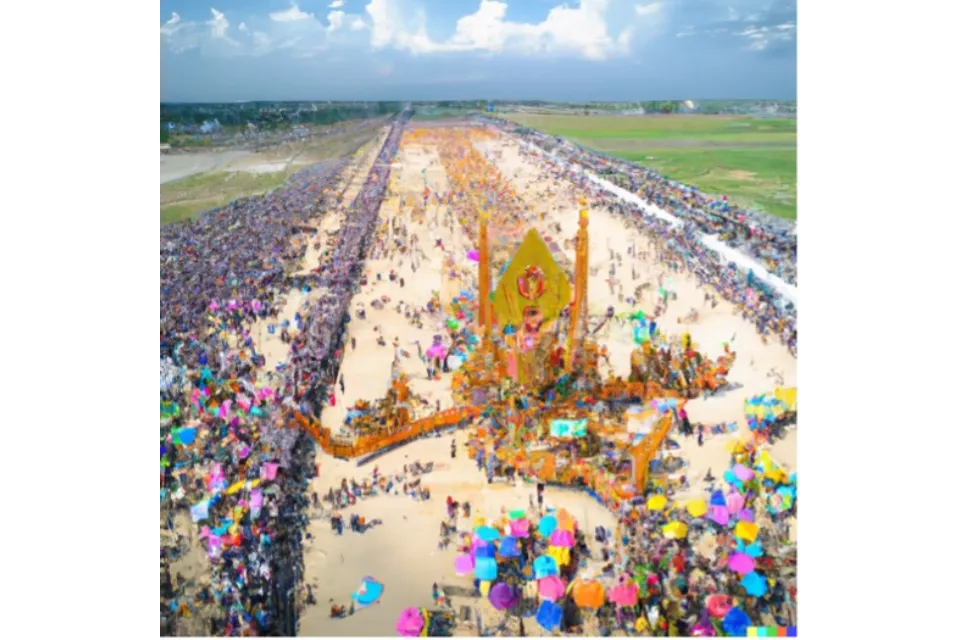
When is Taong Putik Festival?
June 24, the feast day of Saint John the Baptist
Where is Taong Putik Festival?
The Taong Putik – “mud people” in Filipino – head over to the town church at 7am. Along the way, they pass by homes to ask for candles or alms. The mass is followed by the lighting of candles and a solemn procession on foot.
How to get to San Juan?
San Juan is a city located in the province of La Union in the Philippines. To get there, you can fly to Manila and then take a bus from Manila to San Juan. The bus ride from Manila to San Juan takes about 6-7 hours, depending on traffic and other factors.
Alternatively, you can fly to Laoag City, which is the nearest airport to San Juan, and then take a taxi or other transportation to San Juan.
Pintados-Kasadyaan Festival, #12 of Best Filipino Festivals
Leyte / June
Pintados-Kasadyaan Festival is a festival held annually in the city of Tacloban in the Philippines. It is a celebration of the city’s rich cultural heritage and history, and it takes place over several days in June.
The festival features a variety of events, including parades, street dancing, and live music and performances. The highlight of the festival is the “Pintados de Pasinaya” parade, which features participants dressed in colourful costumes and body paint, dancing and performing to traditional music. The Pintados-Kasadyaan Festival is a popular tourist attraction and draws visitors from all over the Philippines and beyond.
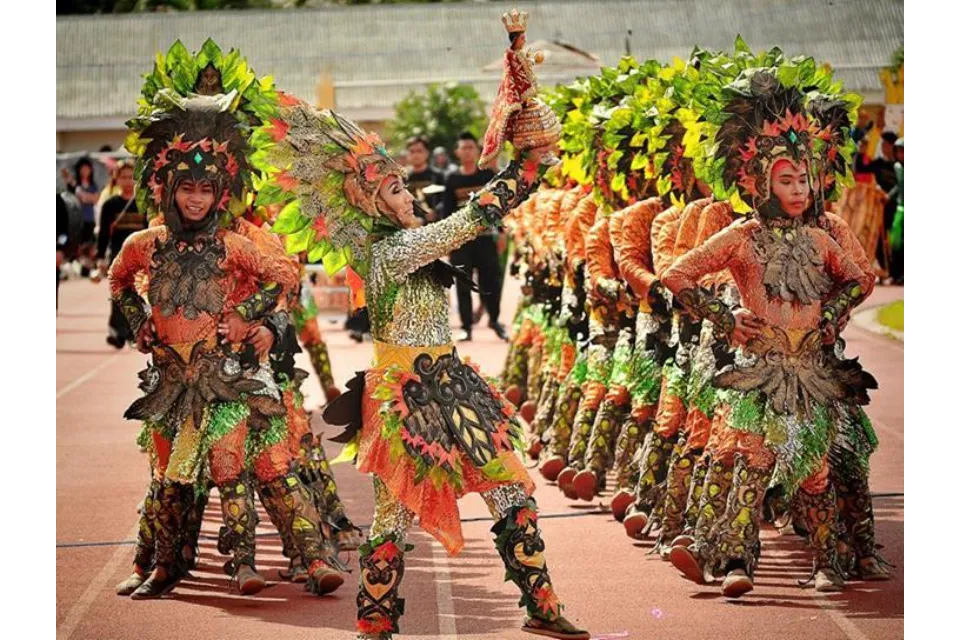
The indigenous people of the Visayan islands were heavily tattooed when the Spanish first arrived. They were referred to by the colonists as the “painted,” or pintados. The Pintados-Kasadyaan Festival in Tacloban City, Leyte, is based on this ancient custom.
However, the Waray word kasadayaan signifies celebration. There will be a highly anticipated street dancing competition, with participants dressed as exaggerated versions of the tattooed warriors who once protected the island of Leyte. Participants from all around Eastern Visavas come dressed to impress in feathers, sequins, and body paint for what is widely regarded as the major cultural celebration in the region.

This has now become one of the most popular and distinctive celebrations in the country Pintados Kasadyaan. The Pintados tattoo, brightly colored outfits, upbeat environment, and nonstop partying all contribute to the event’s popularity. This celebration is a hybrid of two popular celebrations: the Kasadyaan Festival and the Pintados Festival.
The word “kasadyaan” also translates to “happy” in the native tongue. And “Pintados” is short for “brave warriors,” who were once locals.
Tacloban hosts the annual Pintados-Kasadyaan Festival on June 29. An event that sweeps the Philippines like a wave, the Festival of Festivals goes by several names. The dances, shows, and activities all attest to its splendor. During the celebration, villagers share stories and traditions about the heroic deeds of bygone heroes. They accomplish this by staging dance routines and musical performances. Meanwhile, dancers will often paint themselves to resemble they are clad in armor.

Where can you get more information about Pintados-Kasadyaan Festival?
When is Pintados-Kasadyaan Festival?
June 29th, the evening before the celebration of the feast day of Santo Nio de Leyte, a miraculous depiction of Jesus as a child-king from the 19th century.
How to get to Tacloban?
Tacloban is a city located in the province of Leyte in the Philippines. To get there, you can fly to Tacloban City. There are several airlines that offer flights from Manila, the capital city of the Philippines, to Tacloban City. You can check their websites for the latest information on flight schedules and prices. Once you arrive in Tacloban City, you can take a taxi or other transportation to your destination on the island.
Sandugo Festival, #13 of Best Filipino Festivals
Tagbilaran City, Bohol / July
My second hometown even has its own festival, Sandugo Festival. I am so very fortunate to have a house in the Philippines, on the island of Panglao just 10 minute drive from Tagbilaran.
Yes, I have been to a fiesta or two in Bohol. Each Barangay will have its own, and the dates ‘bleed’ into each other making Bohol one big party town for pretty much the whole of July. Just be cautious of power outages, AKA ‘brown-outs’ due to excess power consumption of aggregated partying.
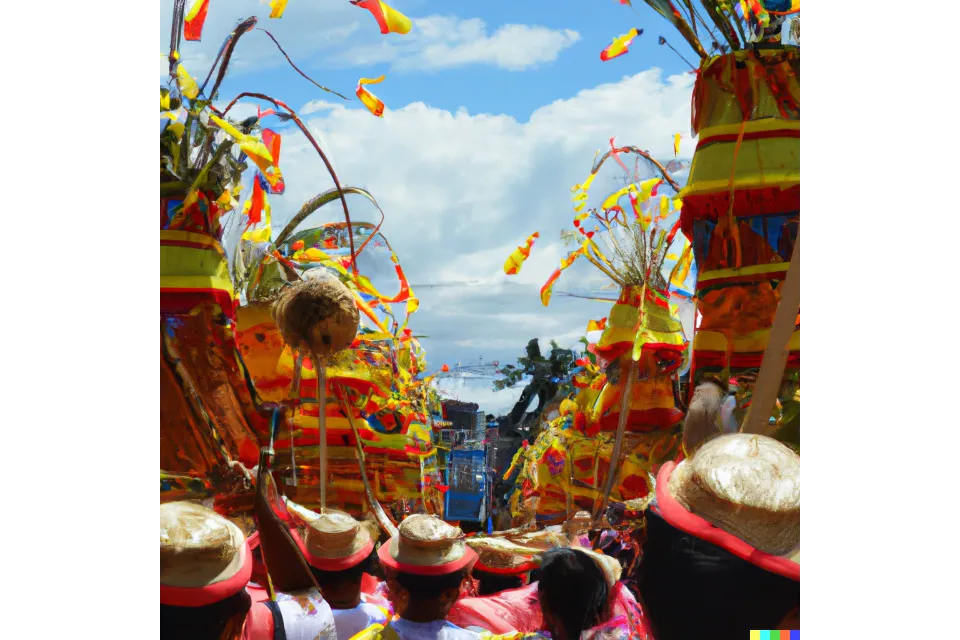
Sandugo Festival is a cultural festival held annually in the city of Tagbilaran in the province of Bohol, Philippines. The festival is held in July to commemorate the Sandugo (blood compact) between the Spanish explorer Miguel López de Legazpi and the local chieftain Datu Sikatuna, which took place in 1565. The festival features a variety of events, including street parades, traditional dance performances, and live music.
Bohol is famed for its Chocolate Hills, white sandy beaches, Whale Sharks, and the World’s smallest primate – The Tarsier. But this festival revolves around the famous Blood Compact. The Tagbilaran Blood Compact, also known as the Sandugo, was a treaty of friendship between the native chieftain Datu Sikatuna and Spanish explorer Miguel López de Legazpi, believed to have taken place in 1565. This was during the early years of Spanish exploration and colonization of the Philippines when Legazpi and his men arrived on the island of Bohol.
The blood compact was a symbolic gesture of goodwill between the Spanish and the native inhabitants and was intended to establish a peaceful relationship between the two groups. The treaty was sealed by the two men drinking each other’s blood from a cup, as a symbol of their commitment to peace and friendship. The event is considered an important moment in Philippine history, as it marked the beginning of the country’s long relationship with Spain and the spread of Christianity in the region.
Hence, it’s Sandugo Fiesta time.
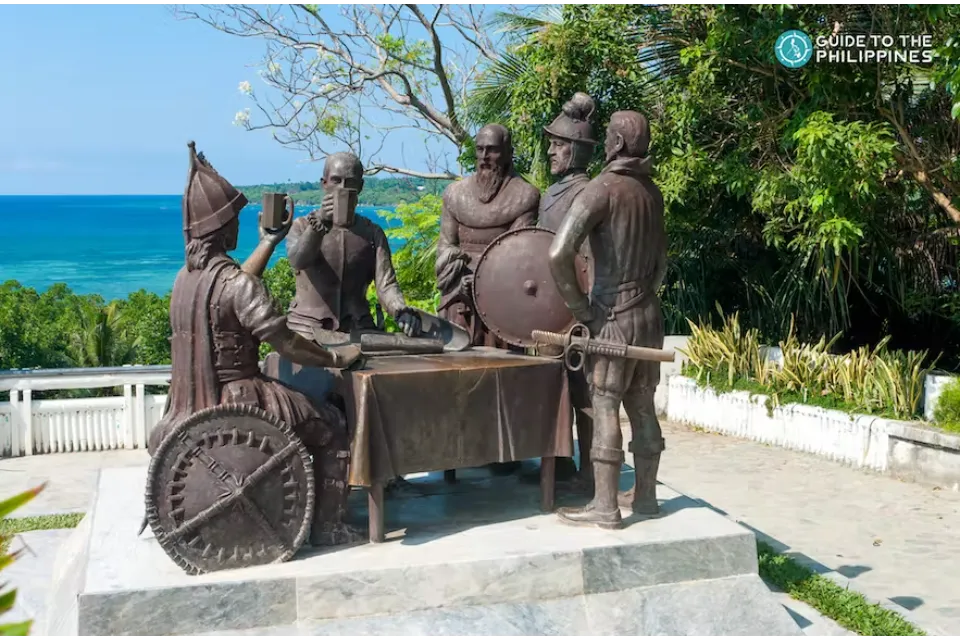
Photo courtesy of; “Guide to the Philippines”
One of the highlights of the festival is the re-enactment of the Sandugo, in which actors portray Legazpi and Sikatuna and ceremonially perform the blood compact. The festival is a popular attraction for both locals and tourists.
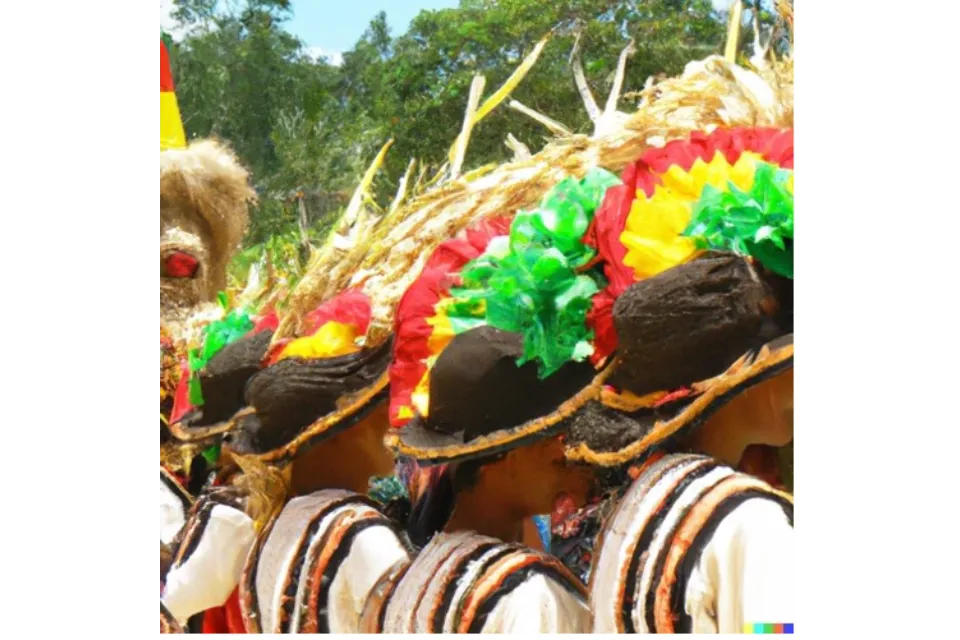
How to get to the Sandugo Festival in Tagbilaran?
You can now enjoy the benefit of flying straight into the new Panglao International Airport. 20 minutes from the airport in a tricycle (the Philippines version of a tuk-tuk) and you are smack back in the middle of Tagbilaran. There are several airlines that offer flights from Manila, the capital city of the Philippines, to Tagbilaran City. You can check their websites for the latest information on flight schedules and prices.
Where to find more information about Sandugo Festival?
When is Sandugo Festival?
July 23rd
Whilst in Tagbilaran, and on Bohol and Panglao islands why not sample some of the fine Filipino foods on offer? Have a read here of our Top 10 Restaurants in Bohol, the Philippines.
Coco Festival, #14 of Best Filipino Festivals
Talisay City / Sept/Oct
The Coconut Festival is a weeklong celebration in honour of the patron saint, Paul the Hermit. The celebration started in 1996 and aims to promote the city and its main produce, the coconut. The highlight of the event, the Mardi gras is usually participated by students and exceptional groups with alluring garbs made from parts of a coconut tree while dancing to local indigenous music.
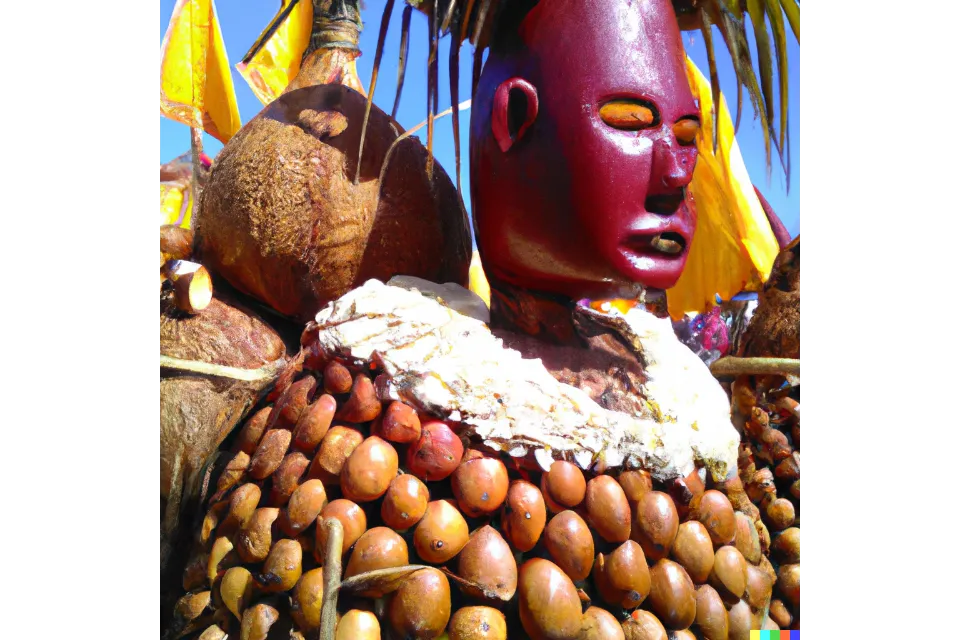
The Coco Festival, also known as the Coco Festival of Talisa is held in honour of the coconut, which is a major source of livelihood for many people in the region. The festival features a variety of events, including a parade, street dancing, and a beauty pageant.
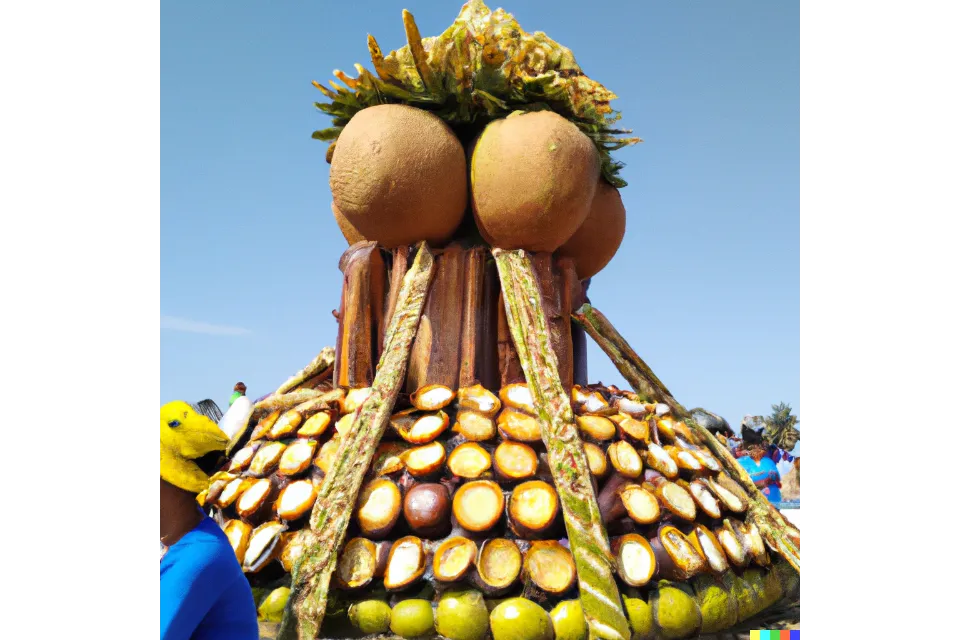
When is the Coco Festival of Talisay?
The Coco Festival, also known as the Coco Festival of Talisay, is an annual event held in Talisay City in the province of Negros Occidental in the Philippines. The festival typically takes place in late September or early October, so you should plan your trip accordingly. Keep in mind that the exact date of the festival may vary from year to year, so it’s a good idea to check with the local tourism office for the most up-to-date information.
How to get to The Coconut Festival: The Coco Festival;
Also known as the Coco Festival of Talisay, is an annual event held in Talisay City in the province of Negros Occidental in the Philippines. To get there, you can fly to Bacolod City, which is the nearest major city to Talisay City, and then take a taxi or other transportation to Talisay City.
Alternatively, there are several major bus companies in Manila that travel daily to San Pablo City. The average bus ride takes a little over 3 hours from Manila. Car rentals are also available if you would like to travel privately and on your own time.
Where to find more information about the Coconut Festival?
Our conclusions of 14 Best Filipino Festivals
Finally, we trust that you found our blog of 14 Best Filipino Festivals insightful and interesting. You really must get your passport out and visit some Filipino festivals, also known as “fiestas,”. They are such an important part of Philippine culture and are celebrated throughout the country. These festivals are typically held to honour a particular patron saint or religious figure, and often involve elaborate ceremonies, processions, and feasts. You’ll see then the context of the interlinking we did of Filipino food with Filipino Fiestas in this blog.
Some of the most well-known Filipino festivals include the Sinulog Festival, which is held annually in Cebu City, the Ati-Atihan Festival, which is held in Kalibo, Aklan, and the MassKara Festival, which is held in Bacolod City. Other popular festivals include the Dinagyang Festival, the Panagbenga Festival, and the Pahiyas Festival. These festivals often feature colourful parades, traditional music and dance performances, and a variety of food and other cultural activities.
Now with Covid measures relaxing there are even more Filipino Festivals in 2023 to target your travels on.
Perhaps, if you request it, we’ll craft another blog review for you.
- Kadayawan Festival, (Davao City) – Aug 14 to 20
- Peñafrancia Festival, (Naga City, Camarines Sur) – Sep 8
- Zamboanga Hermosa Festival (Zamboanga City) – Oct 9 to 12
- Lanzones Festival, (Camiguin) – Oct 16 to 22
- MassKara Festival, (Bacolod City) – Oct 21 to 22
- Helobung Festival (Lake Sebu, South Cotabato) – Nov 9 to 11
- Giant Lantern Festival (San Fernando City, Pampanga) – Dec 16 to Jan 1
Dates may change at the last minute, so do check news updates before you go! But get that passport out and get travelling. You will agree on your return that it absolutely is More Fun in the Philippines.
There it was, our stunning blog of 14 exciting Filipino Festivals and fun things to do in the Philippines including Pangasinan, Baguio, Batangas, Quezon City, Sinulog Festival, Pampanga, Palawan, San Juan, Davao City, Panagbenga Festival and Baguio City.
Philippines Travel Advisory - what you'll need to know for Philippines Travel
The Philippines is excited and ready to warmly welcome all foreign tourists from all countries starting April 1, 2022! Fully-vaccinated tourists no longer have to undergo quarantine.
The Philippines has the Safe Travels Stamp from the World Travel and Tourism Council (WTTC) because it has implemented international standards for health and sanitation and conducts extensive inspections and evaluations of tourism businesses to ensure that only those with proper accreditation are open for business.
The vast majority of those who work in tourist-oriented businesses like hotels and tour groups are up-to-date on their vaccinations.
Take care while you travel throughout the Philippines, but als HAVE FUN. It’s more fun in the Philippines.
What are the entry requirements for the Philippines;
or download the Travel Philippines app.
What are the details of the Philippines Embassy for Philippines Travel Advisory?
Singapore;
Philippines Travel;
Where to get Philippines Visa Information?
To find more details about the Philippines Visa, please contact the Visa Division of the Philippines’ Depart of Foreign Affairs at; +63 2 556 000 or any Philippines Embassy or Consulate abroad.
What are the Philippines’ Travel Restrictions?
The Philippines is excited and ready to warmly welcome all foreign tourists from all countries starting April 1, 2022! Fully-vaccinated tourists no longer have to undergo quarantine
The Philippines are open to all foreigners, even their children. People who are fully vaccinated don’t have to show a pre-departure test.
When you get the second dose of a two-dose series or a single dose of a vaccine more than 14 days before leaving the country of origin, you are considered fully vaccinated.
The vaccine must be approved by either the Philippine Food and Drug Administration (FDA) or the World Health Organization (WHO). Even if they haven’t been vaccinated, children under 15 can also go to the country. They will follow the rules for the accompanying foreign parent who is already fully vaccinated.
What are the Philippines’ travel ban countries?
Get the latest information on what you need to do to get into every place in the country.
Go to www.philippines.travel/safetrip or get the Travel Philippines app on your phone.
Have fun and stay safe as you travel around the Philippines!
The Philippines is fully open to visitors. Filipino and foreign nationals, irrespective of their vaccination status, can now enter the Philippines.
What can you eat in the Philippines at the 14 Best Filipino Festivals?
Whilst in the Philippines enjoying the excellent Filipino festivals of 2023, why not try the most popular Filipino food and cuisine. There are many delicious Filipino dishes in the Philippines, and it can be difficult to narrow them down as it is a wide-ranging cuisine. A lot of local Filipino restaurants will have Filipino food names and pictures, and picture-based menus of their cuisine on offer. So, to help you navigate the food at Filipino restaurants, just look below, and point at your choices from the Filipino food list below.
For much more depth into Filipino cuisine and Filipino food, including origins, recipes, restaurants, and Filipino dishes, you simply must read;
40 Unbelievable Filipino Foods (2023)
Here are some of the most popular Filipino foods, and well-known Filipino dishes including Filipino food names and pictures:
Tortang Talong

a Filipino dish made with grilled eggplant dipped in beaten egg and fried. It is typically served with a dipping sauce made from vinegar, garlic, and chili peppers. The dish is simple to make, but it is flavourful and satisfying. This is one of my all-time favourites. It is some incredible food.
Tocino
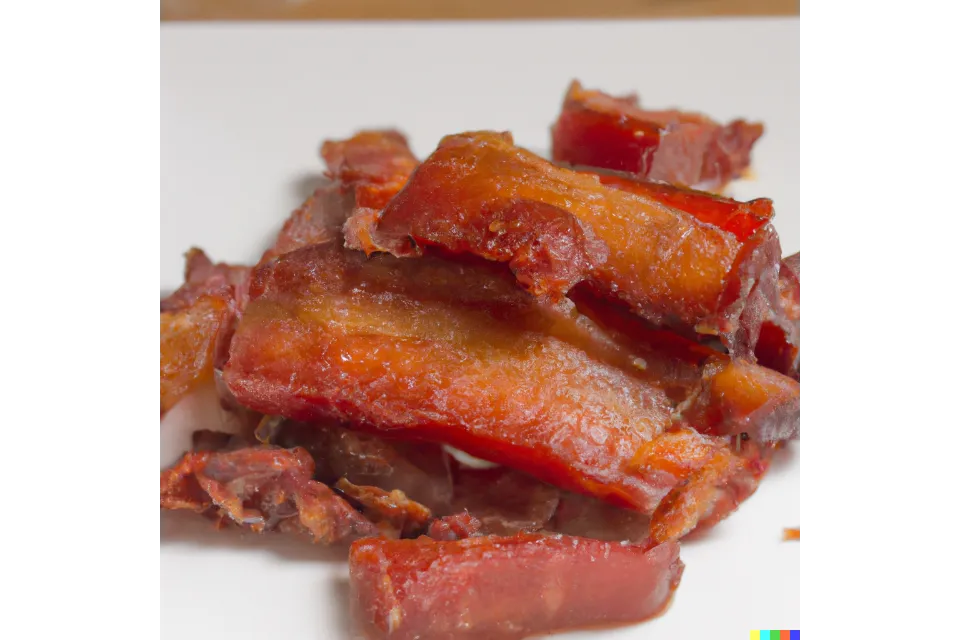
Is a type of Filipino food for breakfast made from pork belly that has been marinated in a mixture of spices and then grilled or fried. It is typically served with garlic fried rice (Sinangag) and a fried egg (itlog) and is a popular breakfast dish in the Philippines. Tocino is known for its sweet and savoury flavour, and it is often made with a combination of spices such as garlic, bay leaves, and peppercorns. The pork belly is typically sliced into thin strips before being marinated and cooked, which allows it to absorb the flavours of the spices and become tender and flavourful.
You can click to read my Tocino Recipe and cook this deliciousness yourself.
Adobo

Adobo – is a popular Filipino dish made with chicken or pork cooked in vinegar, soy sauce, garlic, and other spices. Adobo is considered by many to be the national dish of the Philippines and the most iconic of Filipino foods. Adobo is known for its tangy and flavourful taste. Adobo can be made with a variety of meats, including chicken, pork, beef, and seafood, and it is often cooked in a large pot or casserole dish.
The vinegar and soy sauce used in the dish give it a distinctive tangy flavour, and the garlic and other spices add depth and complexity. Adobo is typically served with rice and is a popular dish at family gatherings and special occasions.
Sinigang

Sinigang – is a Filipino soup or Filipino stew made with meat or seafood and vegetables, typically cooked in a sour broth made from tamarind or other souring agents. Sinigang is a popular Filipino dish and is known for its sour and savoury flavour. Sinigang can be made with a variety of meats, including pork, beef, chicken, shrimp, and fish, and it is often served with a variety of vegetables, such as tomatoes, onions, okra, and eggplant.
The Tamarind broth gives Sinigang its distinctive sour flavour, and it is typically seasoned with fish sauce and other seasonings to add depth and complexity.
Sinigang is typically served with rice and is a popular dish for both everyday meals and special occasions.
Lechón
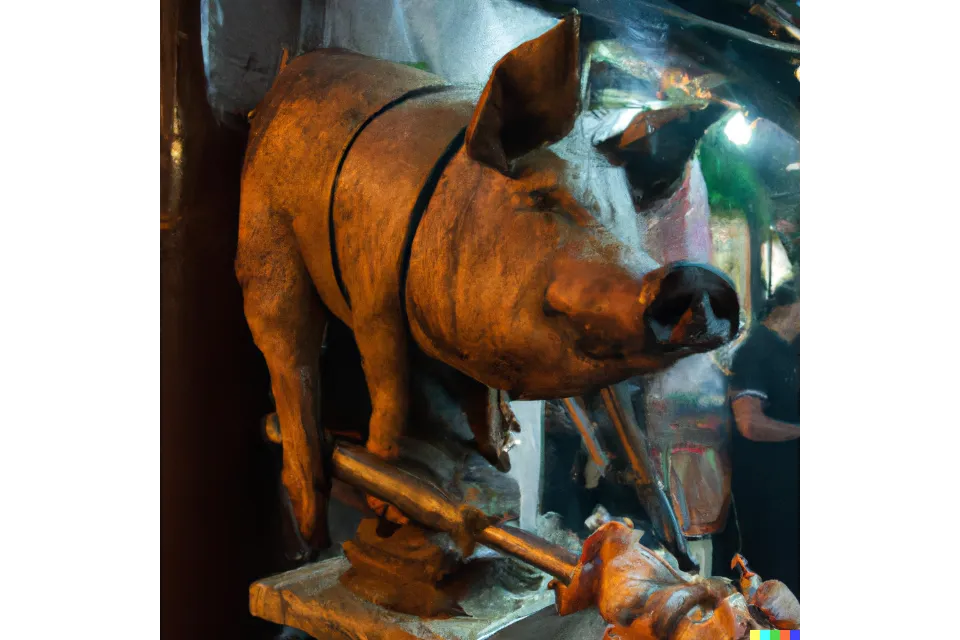
Lechón – is a whole roasted pig, typically served at special occasions such as weddings, parties and of course fiesta. Lechón is a popular Philippines dish and is known for its crispy and flavourful skin and tender, juicy meat. Lechón is typically made by roasting a whole pig over an open fire or in a pit, using charcoal or wood to generate heat and smoke. The pig is seasoned with a variety of spices, including garlic, pepper, and salt, and it is cooked until the skin is crispy and the meat is tender and juicy. Lechón is often served with a dipping sauce made from vinegar, garlic, and chili peppers, and it is a popular dish at celebrations and festivals.
This is die-die-must-try, folks. Plus, it is mandatory to have this with an icy-cold Pilsen. Lechón is another King of Filipino food.
Kare-kare
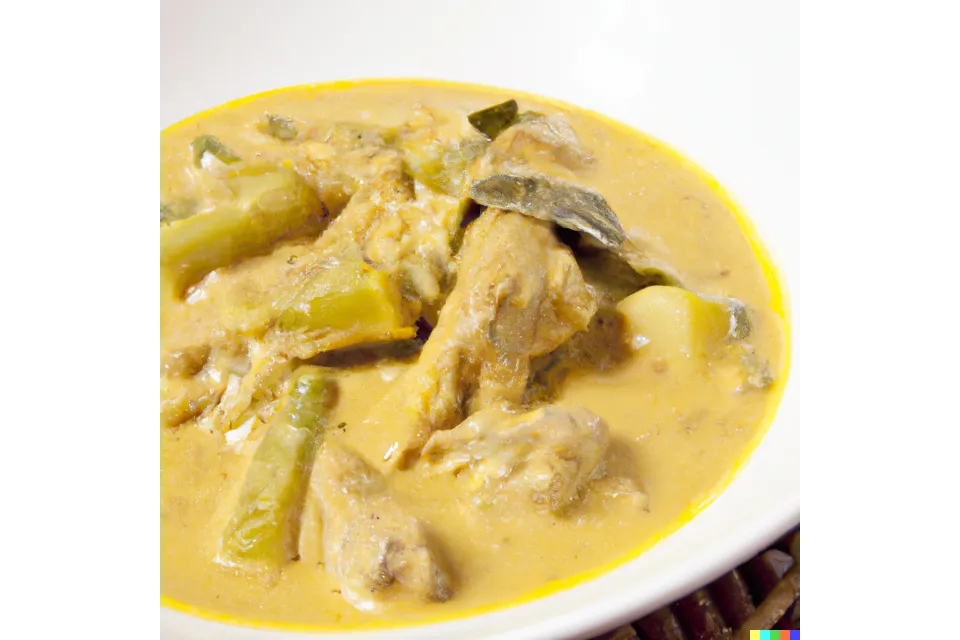
Kare-kare – is a stew made with oxtail, tripe, or beef, and vegetables, cooked in a thick peanut sauce. Kare-kare is a popular Philippines food and is known for its rich and savoury flavour. Kare-kare typically includes a variety of vegetables, such as eggplant, bok choy, and string beans, and it is often served with a side of shrimp paste (bagoong) for added flavour. The peanut sauce gives Kare-kare its distinctive flavour and creamy texture, and it is typically made by blending roasted peanuts with a variety of seasonings and broth.
Kare-kare is typically served with rice and is a popular dish at family gatherings and special occasions.
Lumpia
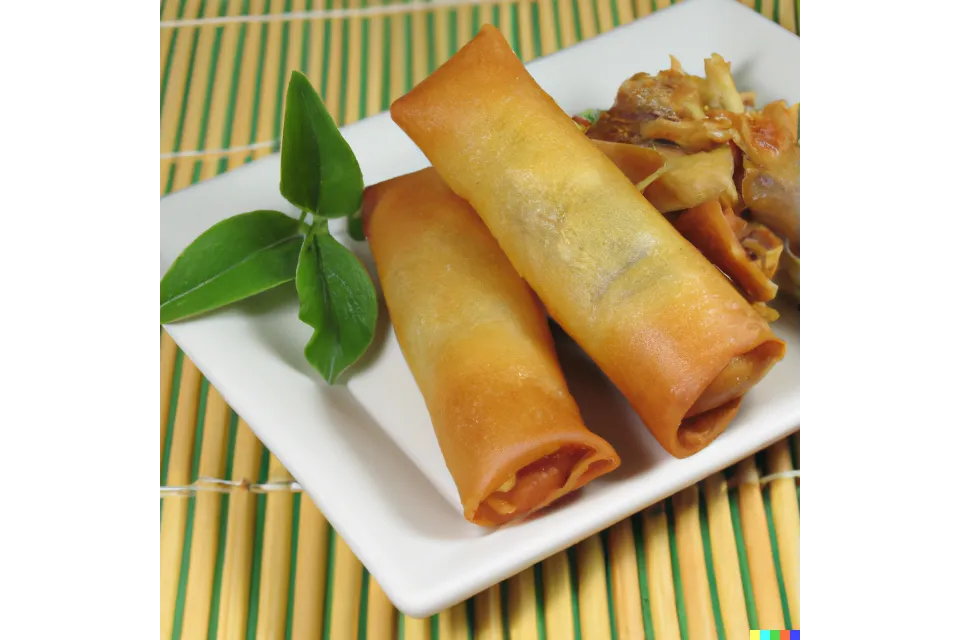
Lumpia – is a type of spring roll, filled with meat, vegetables, or other ingredients and deep-fried. Lumpia is a popular snack and appetizer in the Philippines cuisine, and it is known for its crispy and flavourful wrapper. Lumpia can be made with a variety of fillings, including chicken, beef, shrimp, and vegetables, and it is often served with a dipping sauce made from vinegar, garlic, and chili peppers. The wrapper of the Lumpia is made from a thin and delicate pastry dough, which is rolled around the filling and then deep-fried until crispy. Lumpia is typically served as a Filipino appetizer or snack, and it is a popular Philippines street food.
Sisig
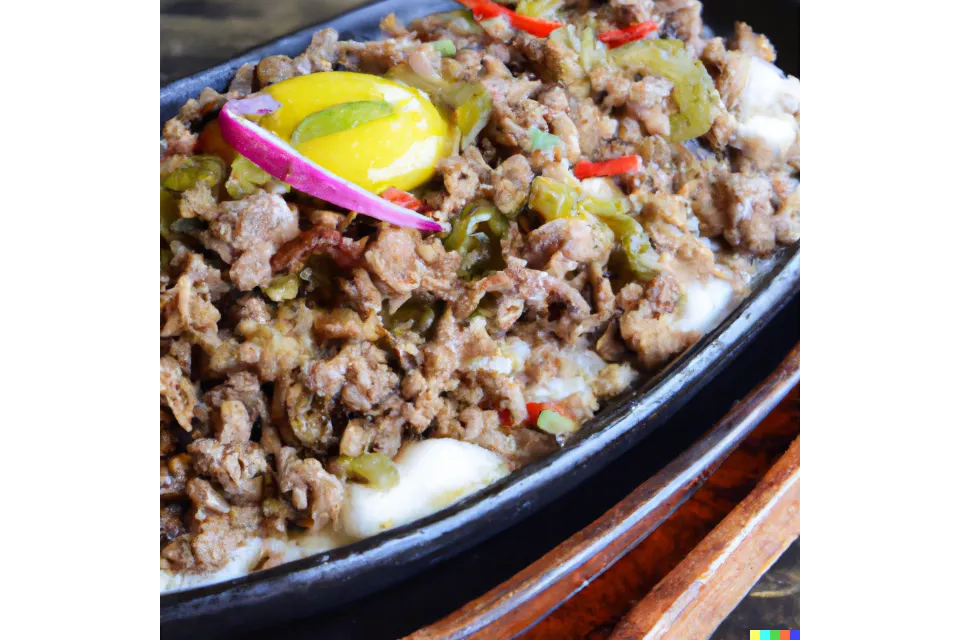
Sisig – Sisig is a popular Filipino dish made from chopped pork or chicken, mixed with onions, chili peppers, and other seasonings. Sisig originated in the city of Angeles, in the province of Pampanga, and it is known for its spicy and savoury flavour. There are many variations of Sisig, but the most common version is made with pork cheeks and liver, which are chopped and grilled until crispy. The cooked pork is then mixed with onions, chili peppers, and other seasonings, and served on a sizzling plate.
Sisig is typically served as a main Filipino dish, and it is often accompanied by rice and beer. It is a popular street food and can be found at many restaurants and street food stalls throughout the Philippines.
Sisig is my all-time favorite Filipino food. So much so, that I have written a complete comparison review in homage to this, Sisig: King of Filipino food.
Click here to read my blog on Sisig the multi-personality of Filipino foods.
Filipino foods cucumber, tomato, onion, ginger, and vinegar salad is a cracking personal recipe of mine and the perfect bedfellow for your Sisig.
Whilst you’re at it, why not make your own Sisig by following my Spam & Corned Beef Sisig Recipe? It’s tough to find pig heads in Singapore, so I replaced the main ingredient with other Filipino foods favourites of Spam and Corned Beef.
Pancit
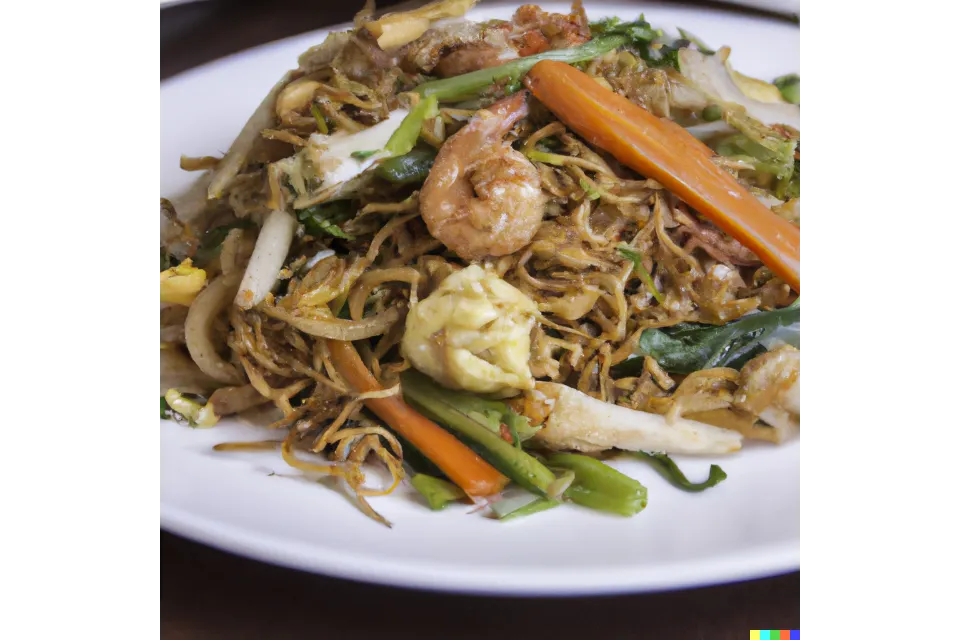
Pancit – is a type of noodle dish, typically made with rice or wheat noodles and a variety of vegetables and meat or seafood. Pancit is a popular Philippines dish and is known for its flavourful and satisfying taste. Pancit can be made with a variety of ingredients, depending on the region and the personal preference of the cook.
The most common version of Pancit is called Pancit Canton, which is made with egg noodles, vegetables, and chicken or pork. Other versions of the dish include Pancit Bihon, made with thin rice noodles, and Pancit Palabok, made with noodles and topped with a shrimp-based sauce.
Pancit is typically served as a main Filipino dish, and it is often enjoyed at special occasions and celebrations.
Bicol Express
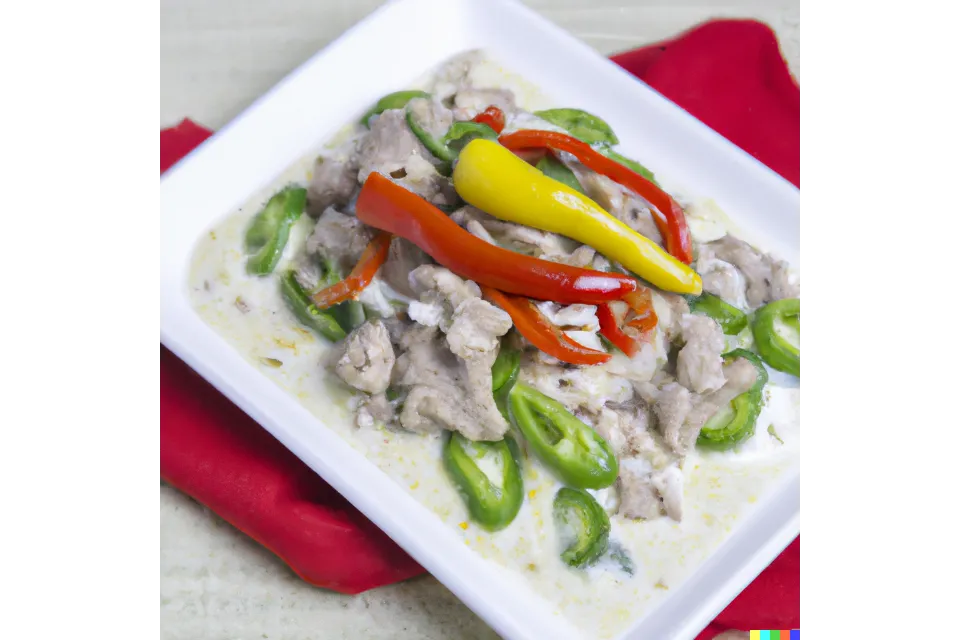
Bicol Express – is a spicy Filipino dish made with pork, coconut milk, and chili peppers. Bicol Express originated in the Bicol region of the Philippines, which is known for its fiery cuisine, and it is named after the train that used to travel between Manila and the Bicol region. Bicol Express is made by sautéing pork in oil, along with garlic, onions, and other seasonings. Coconut milk is then added, along with chili peppers and other spices, to create a rich and flavourful sauce. Bicol Express is typically served with rice and is known for its spicy and hearty flavour.
Do you want to try cooking this yourself? Click here for my Bicol Express Recipe.
Tinola
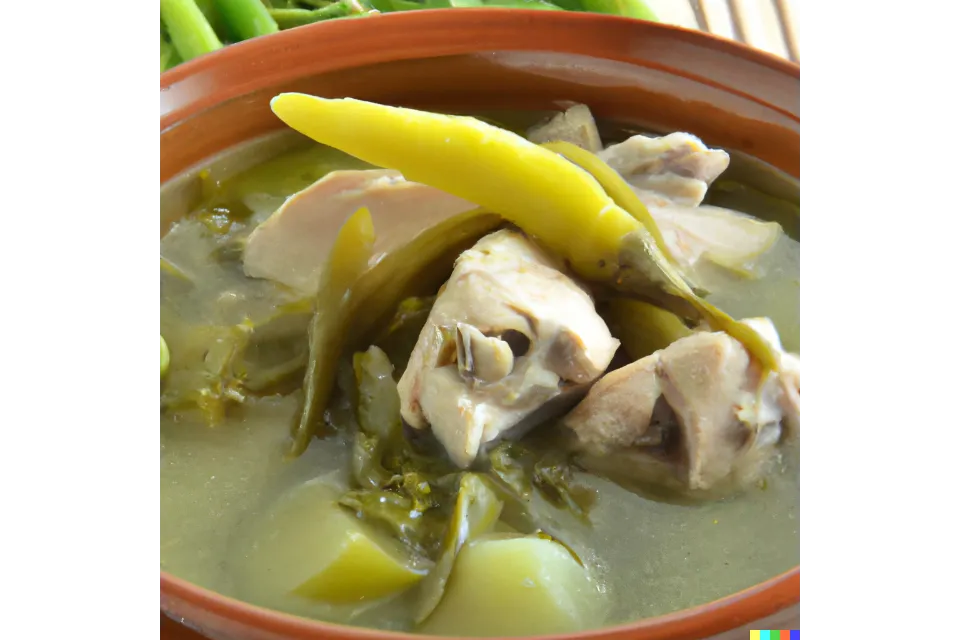
Tinola – is a soup or stew made with chicken, ginger, and vegetables, typically served with rice. Tinola is a popular Philippines dish and is known for its comforting and flavourful taste. Tinola is often made with chicken, but it can also be made with other meats, such as pork or beef. The ginger and other seasonings give the dish its distinctive flavour, and it is often served with a variety of vegetables, such as chayote, spinach, and green papaya. Tinola is typically served as a main dish and is often enjoyed as a comforting meal on a cold day.
Bulalo

Bulalo – is a soup made with beef shanks and marrow bones, typically served with vegetables. It is a popular Philippines dish, and it is known for its rich and hearty flavour. The beef shanks and marrow bones are cooked in a large pot of water for several hours until the meat is tender and the Bulalo broth has become rich and flavourful. Vegetables, such as cabbage and potatoes, are often added to the Bulalo soup, and the dish is typically served with a side of rice. Bulalo is a popular dish on a cold day, and it is often enjoyed at family gatherings and special occasions.
Bulalo is another die-die-must-try Filipino food.
I even crafted my very own recipe so we could enjoy it at home. Click here for my Filipino foods Bulalo Soup Recipe.
Halo-halo
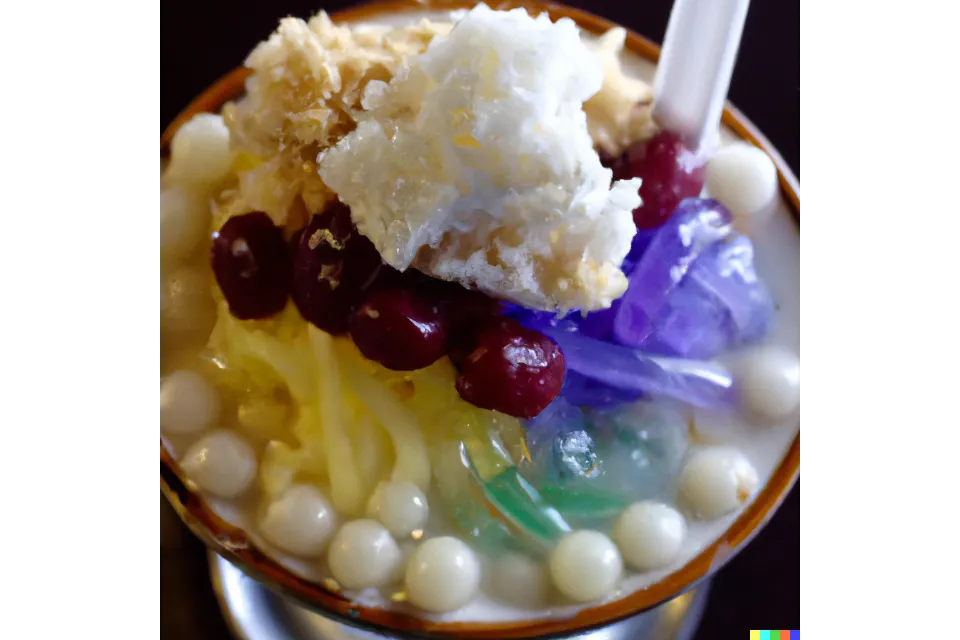
Halo-halo – is a popular Filipino dessert made with a mixture of shaved ice, evaporated milk, and a variety of sweet toppings. The name Halo-halo means “mix-mix” in Tagalog, and it refers to the various ingredients that are mixed to create the dessert. Halo-halo typically includes a variety of toppings, such as sweetened beans, fruit, jelly, and ice cream, and it is often garnished with a scoop of ube ice cream, which is a popular purple yam-flavoured ice cream in the Philippines. Halo-halo is a refreshing and sweet dessert that is often enjoyed on hot days, and it is a popular tourist attraction in the Philippines.


